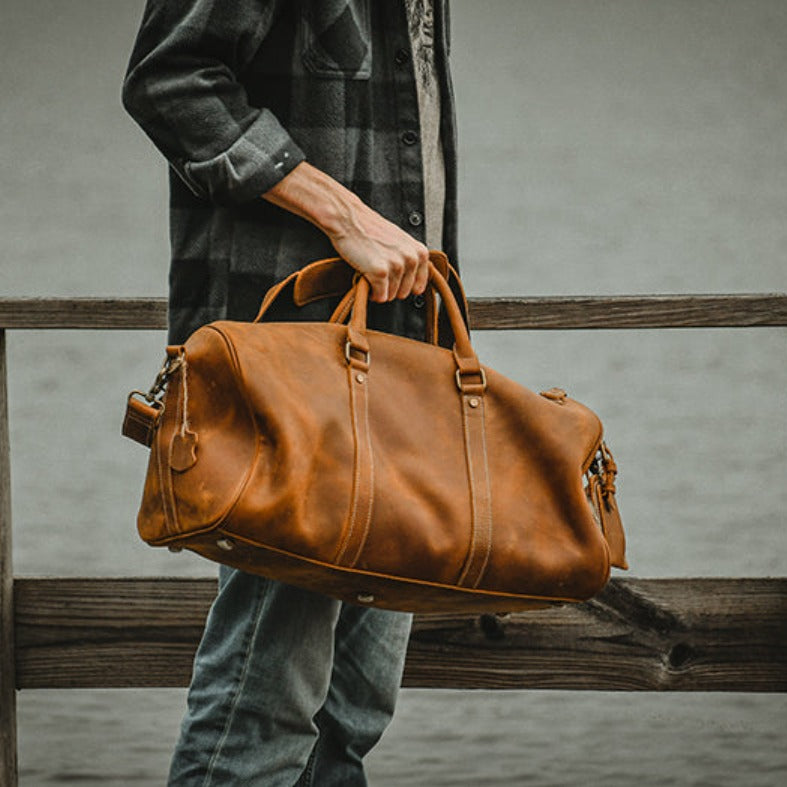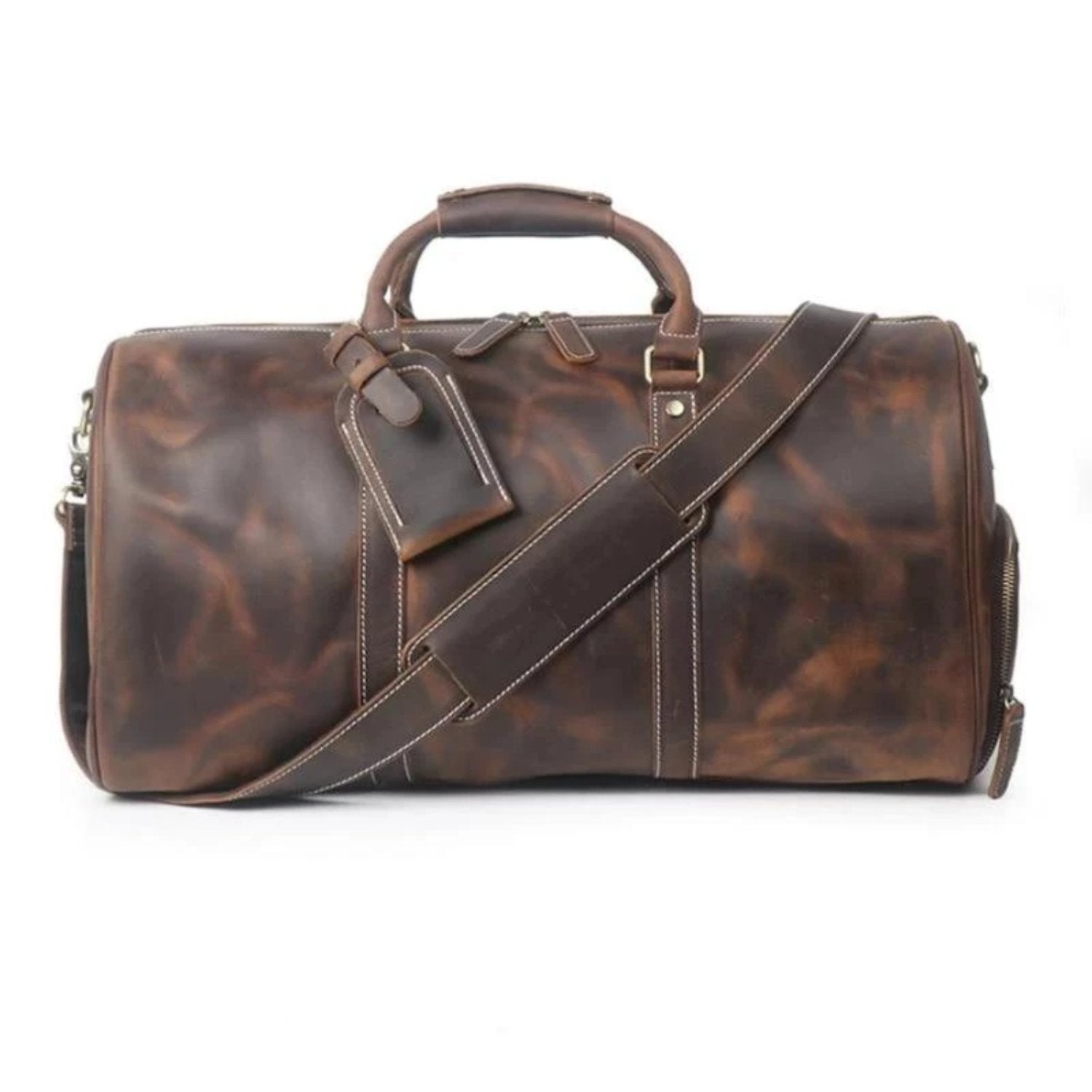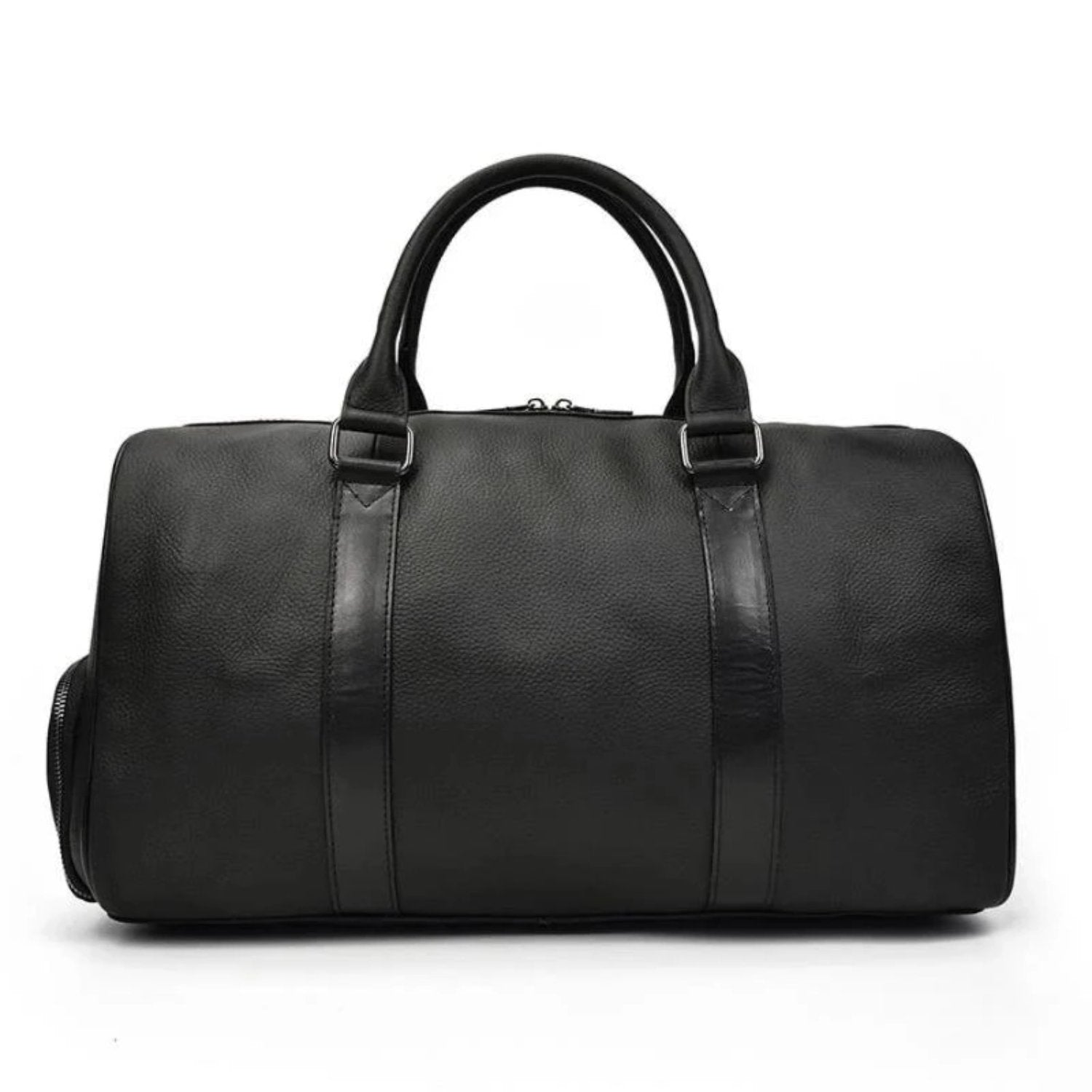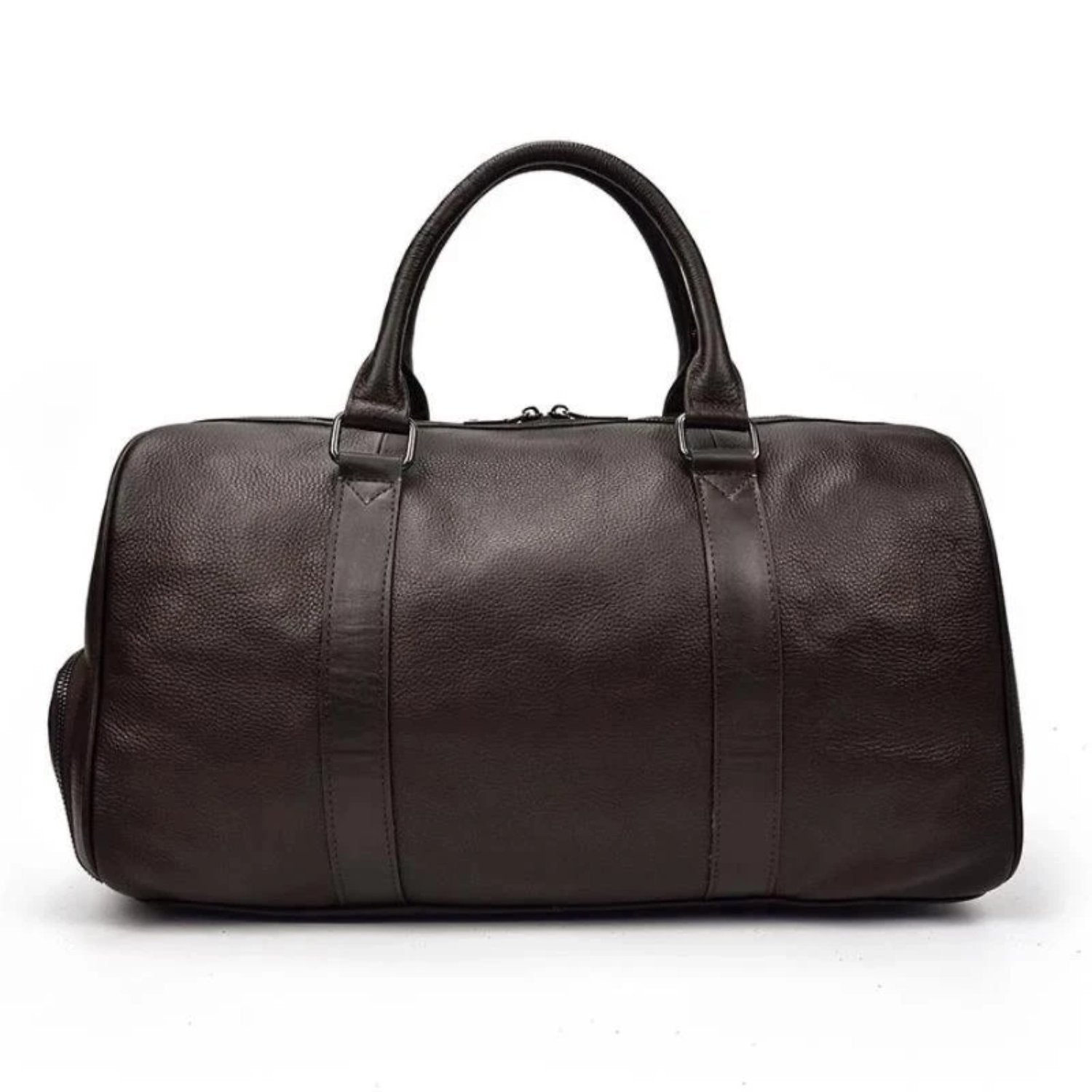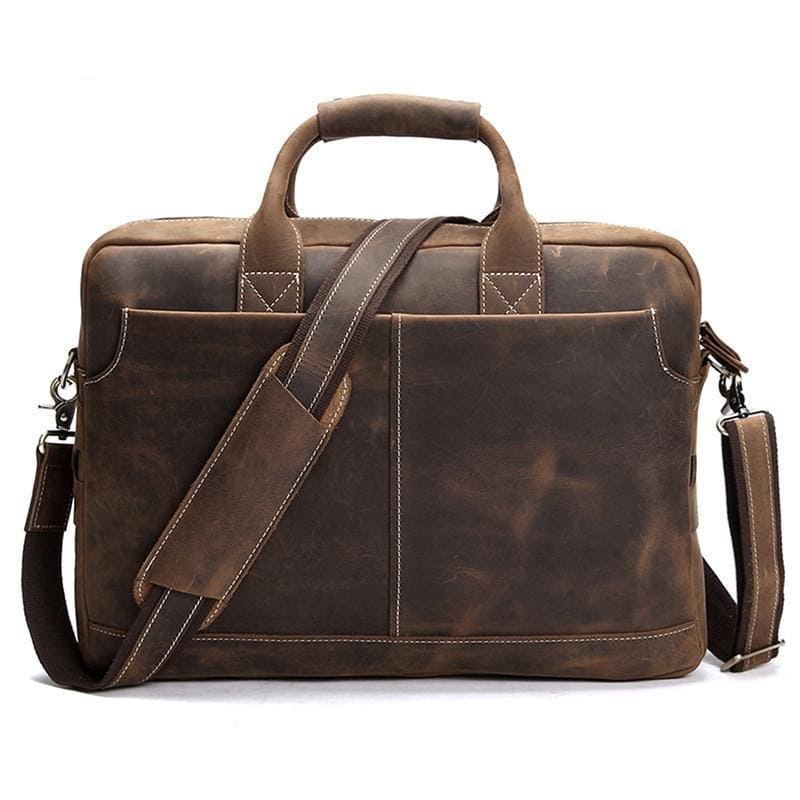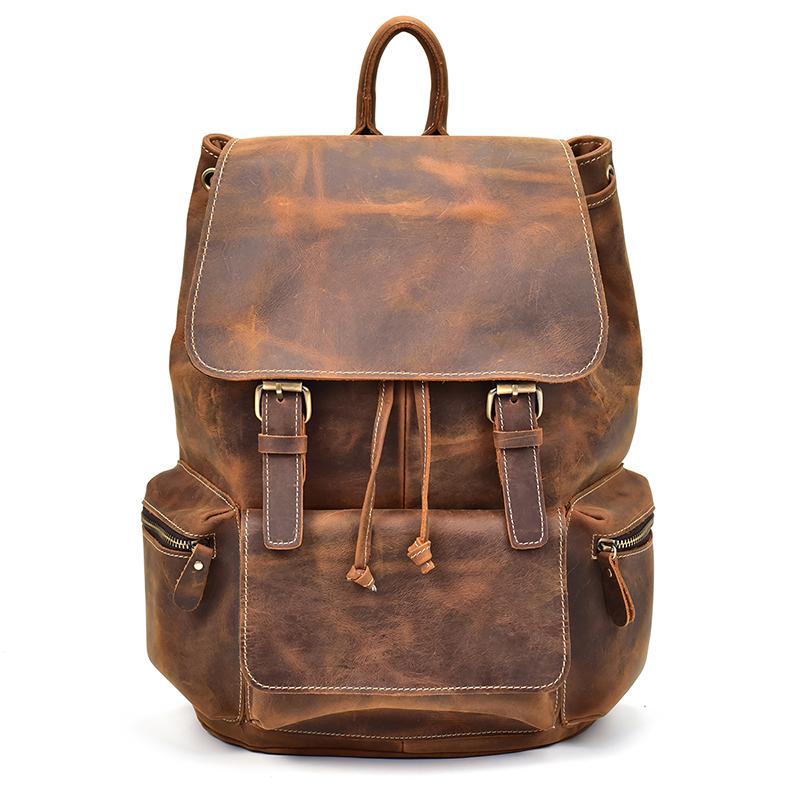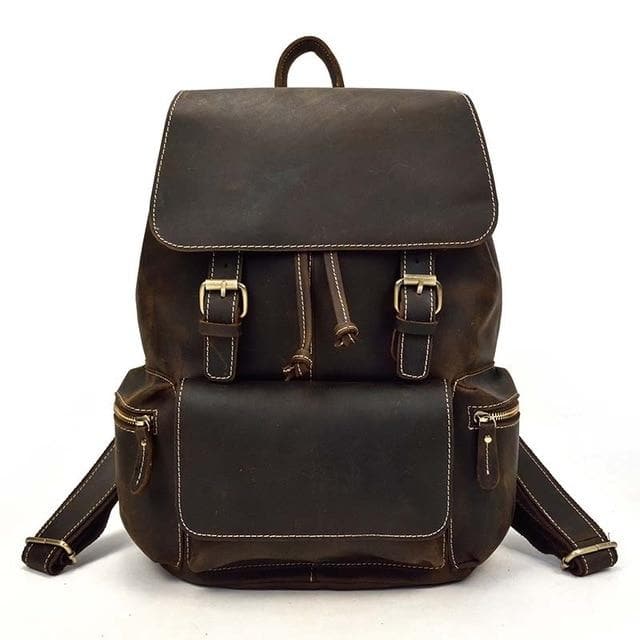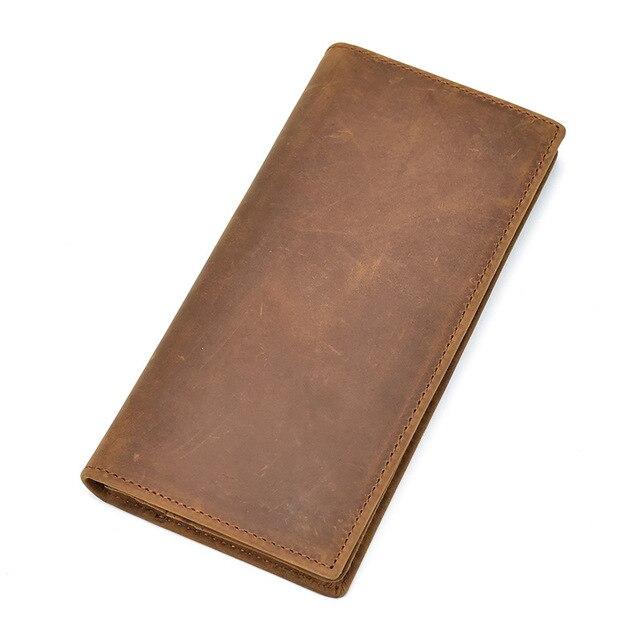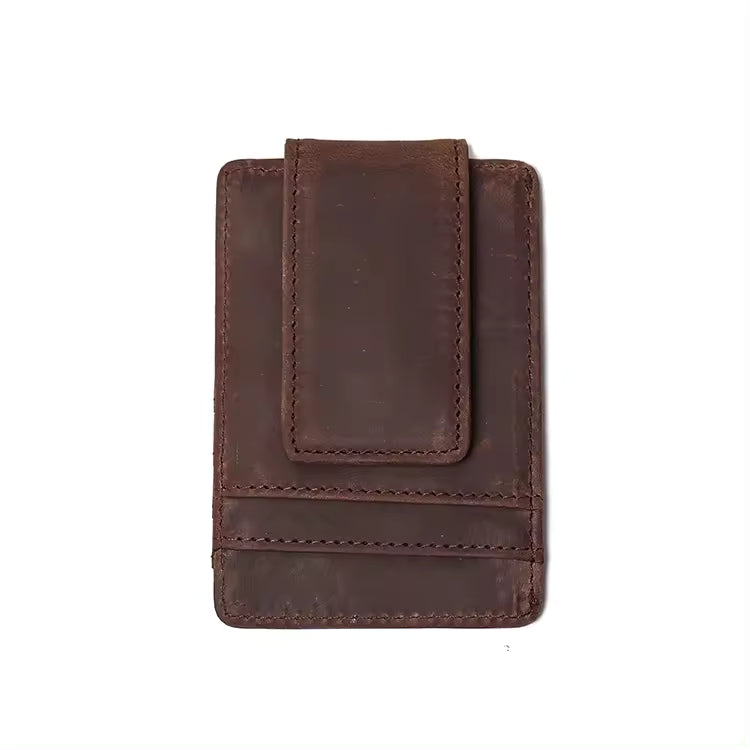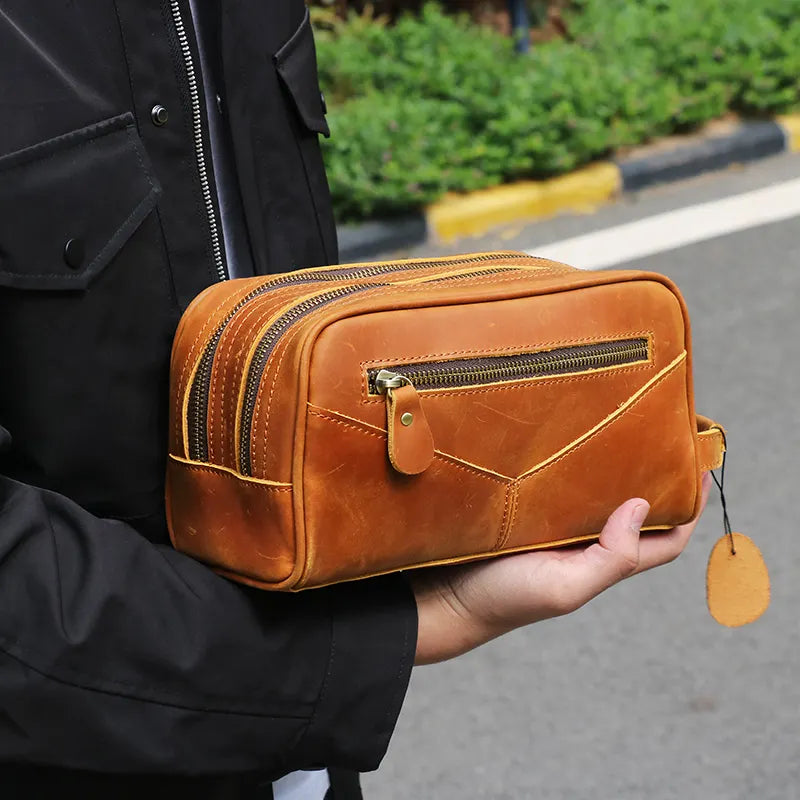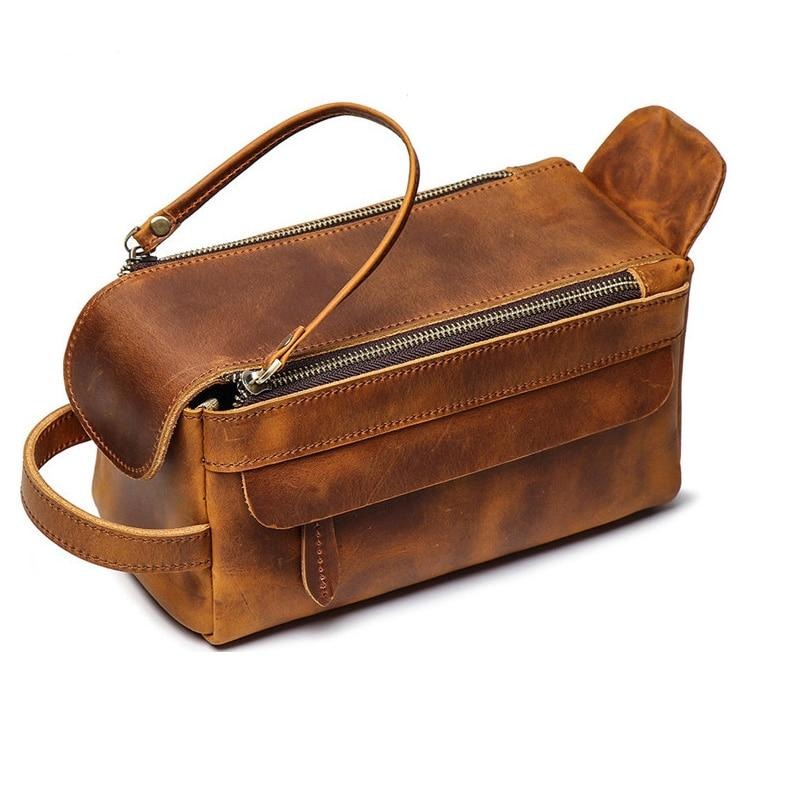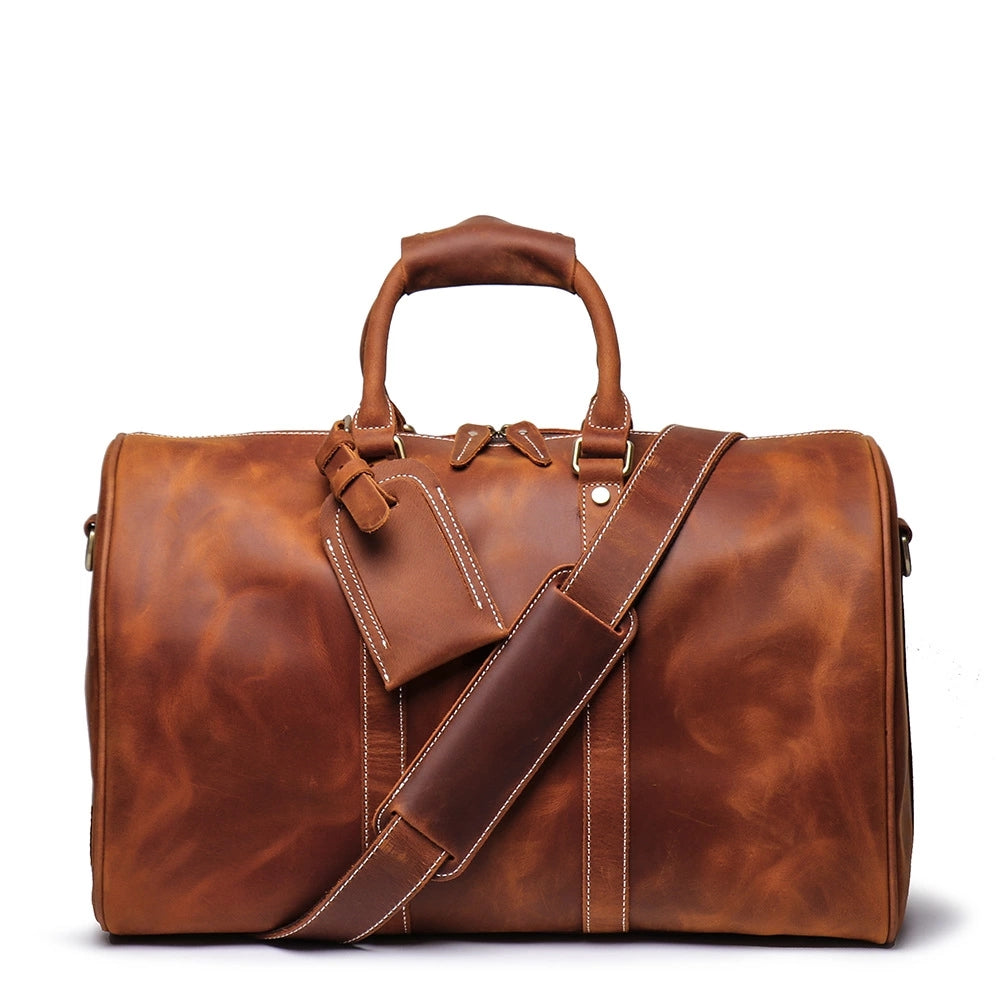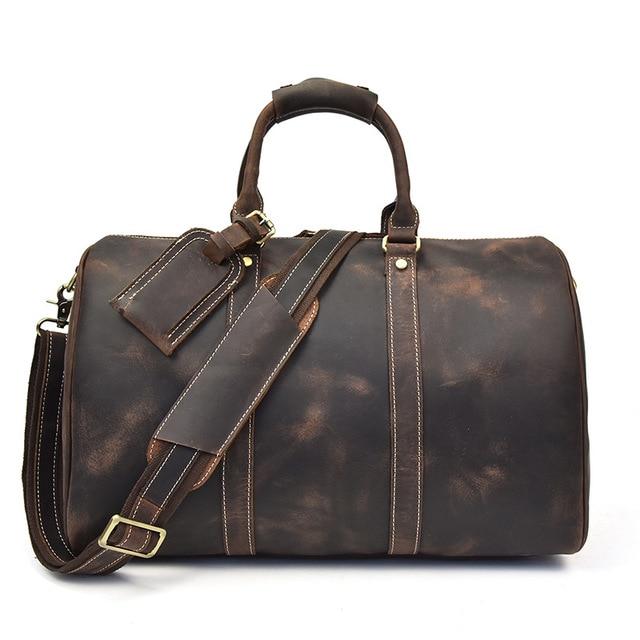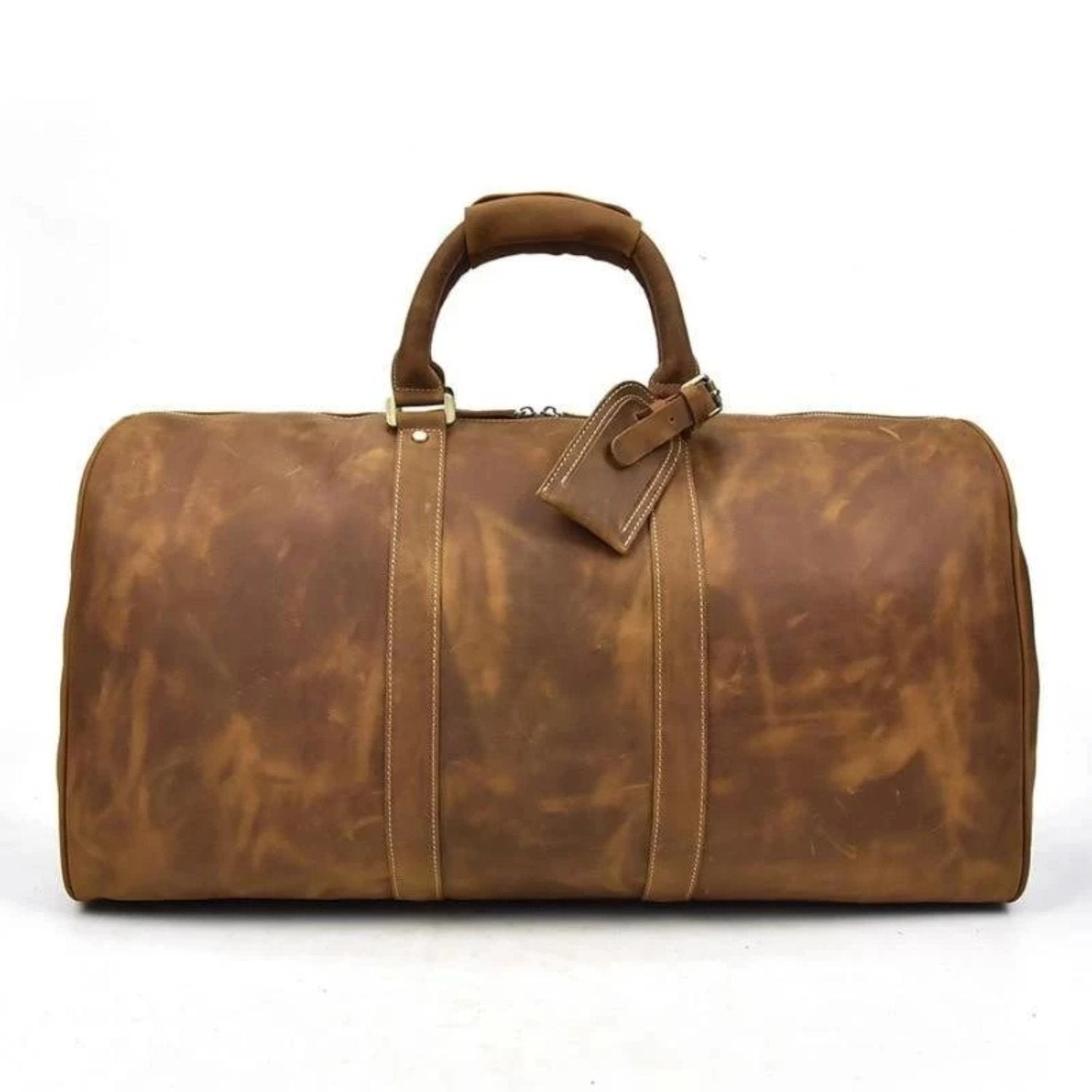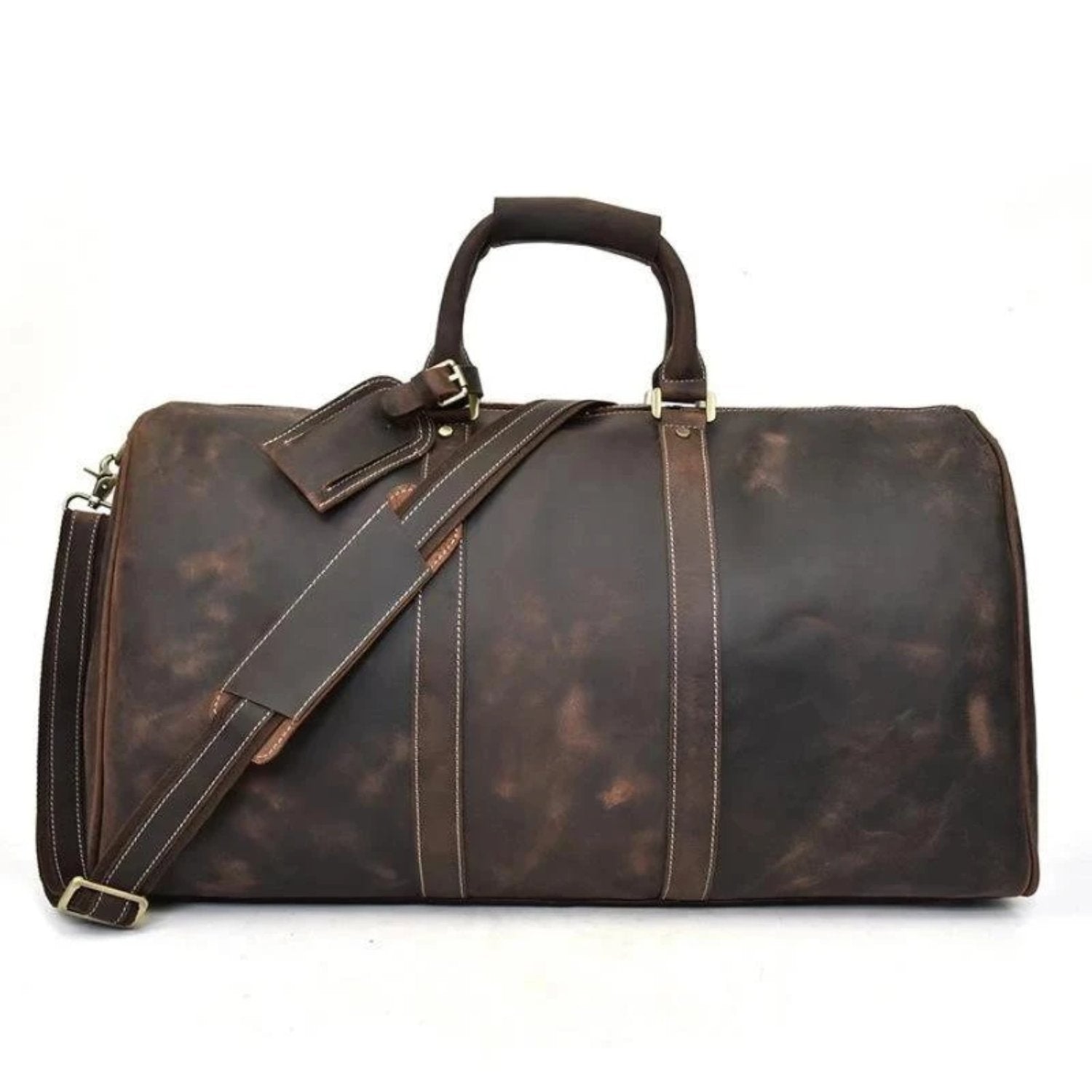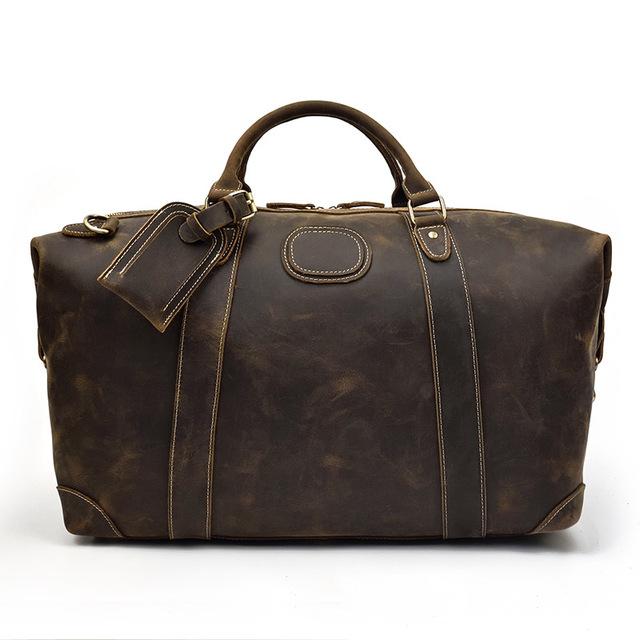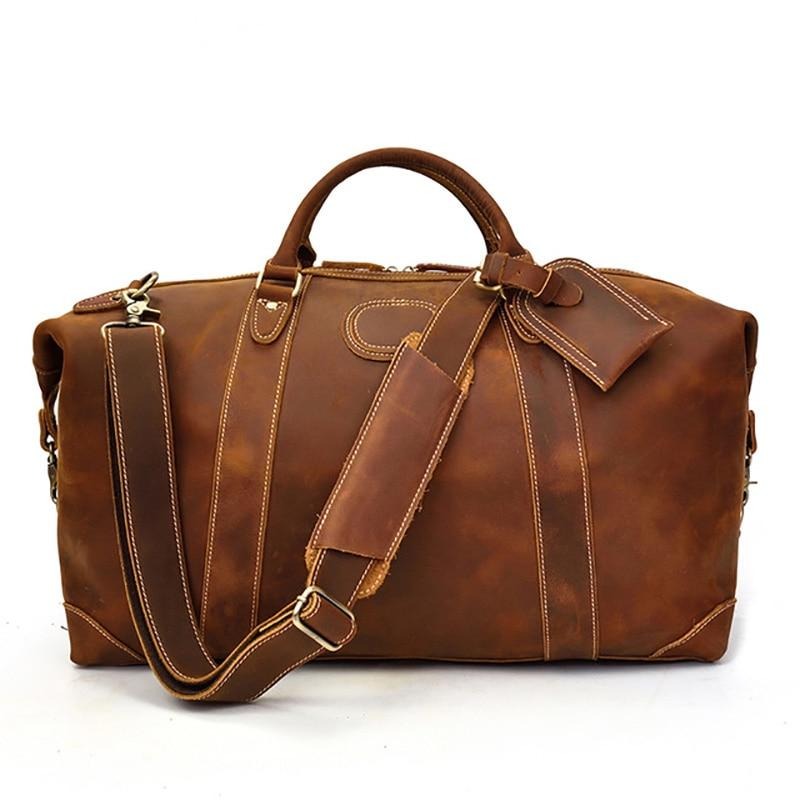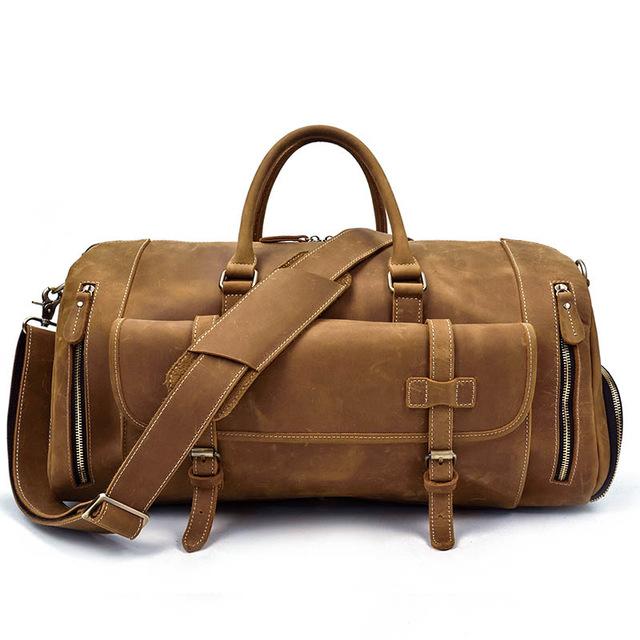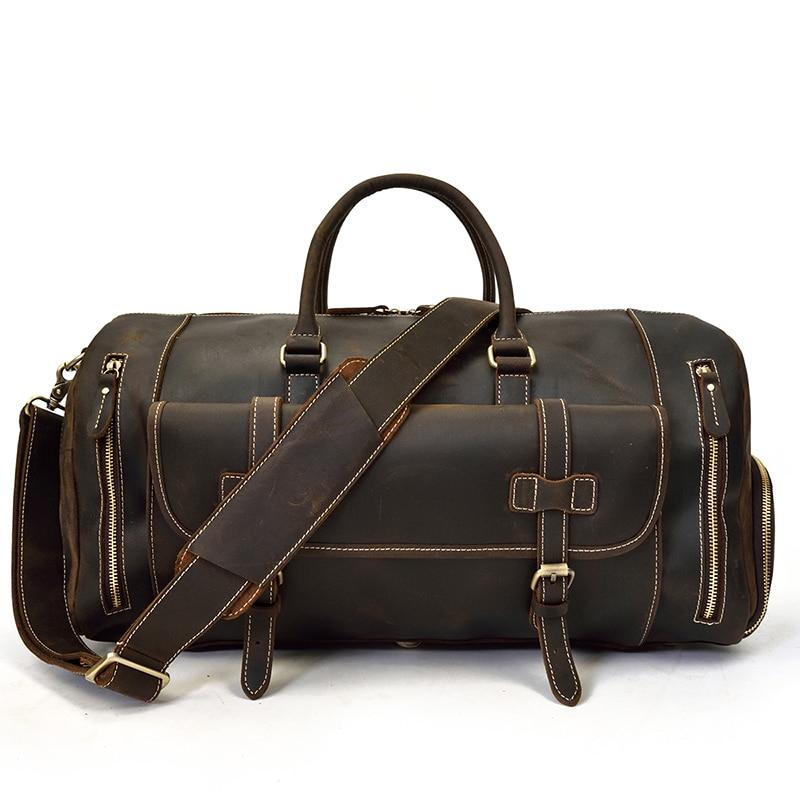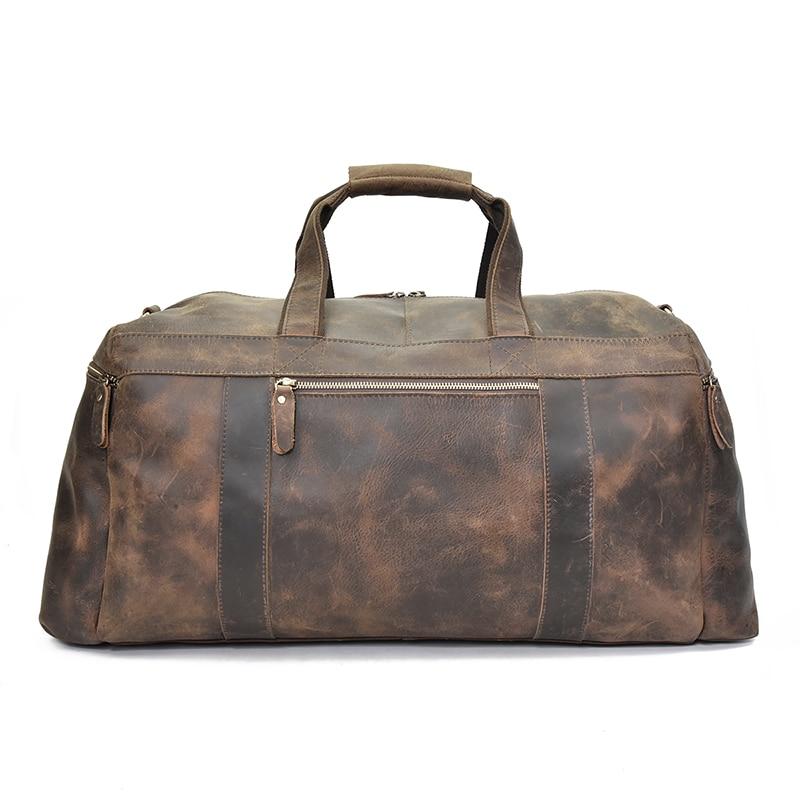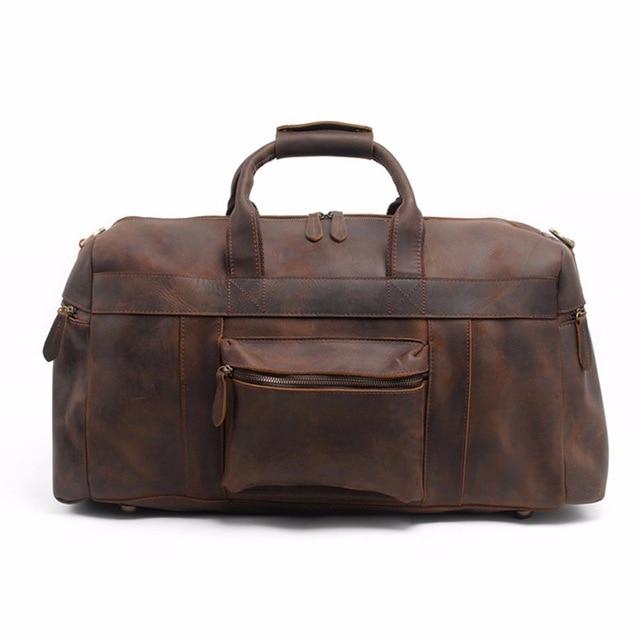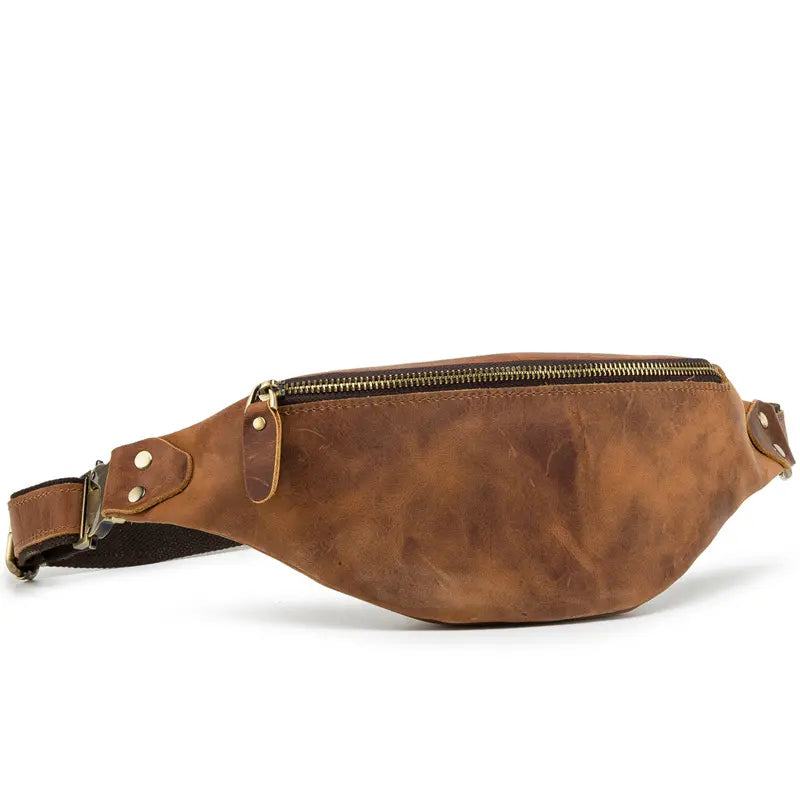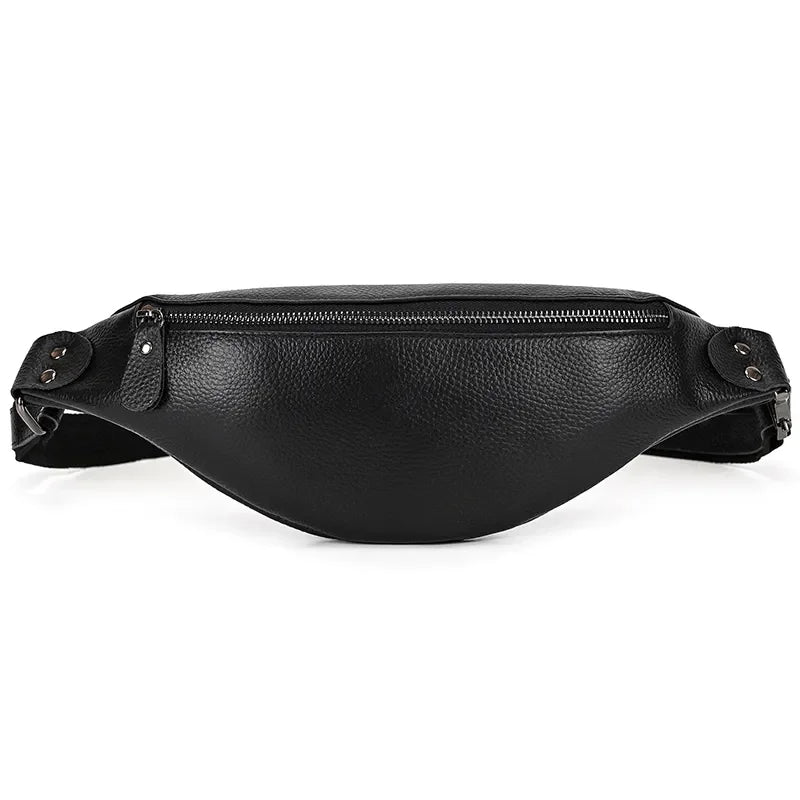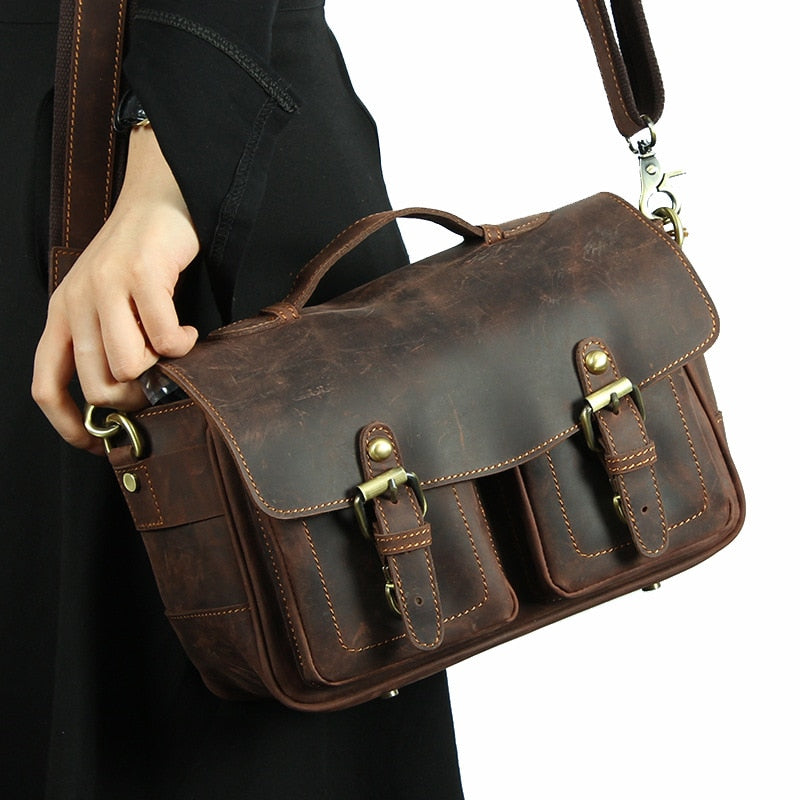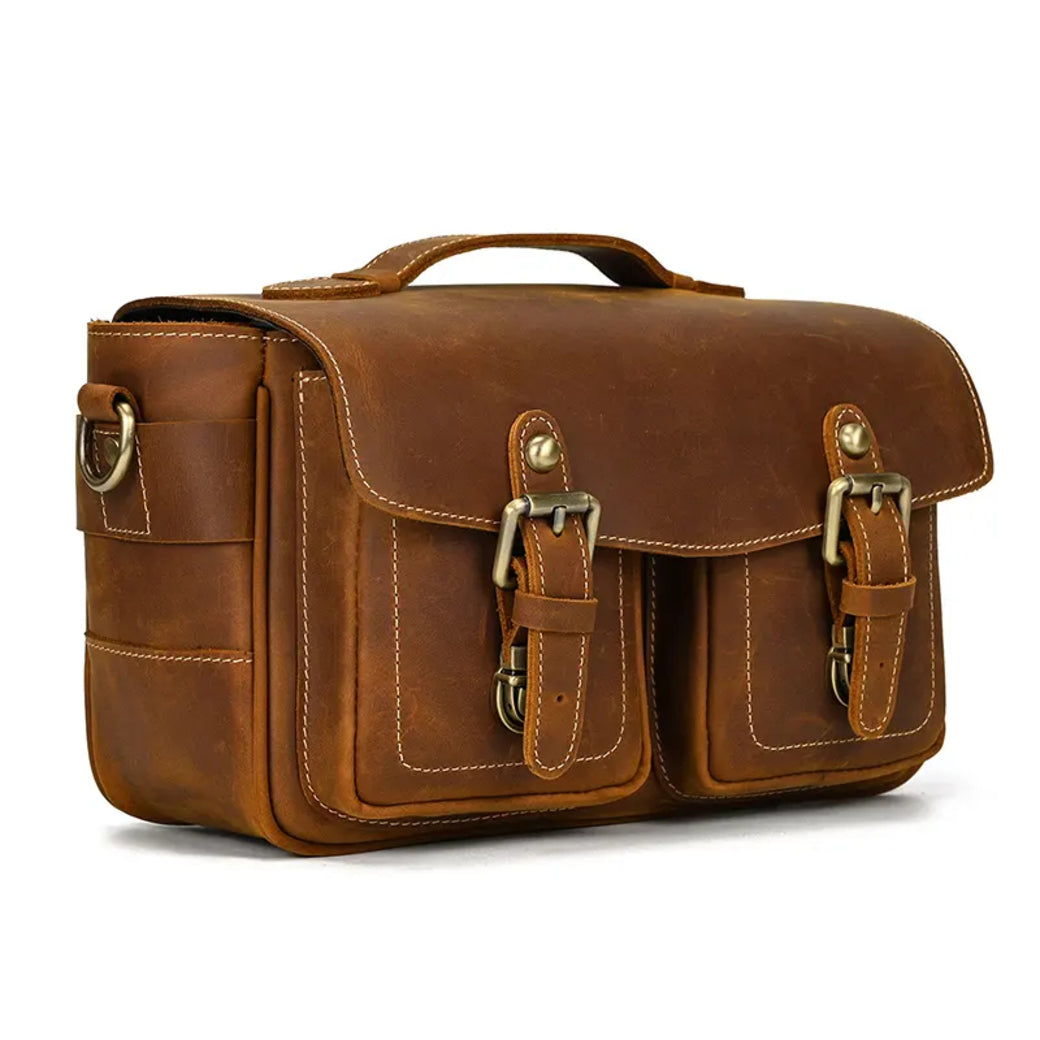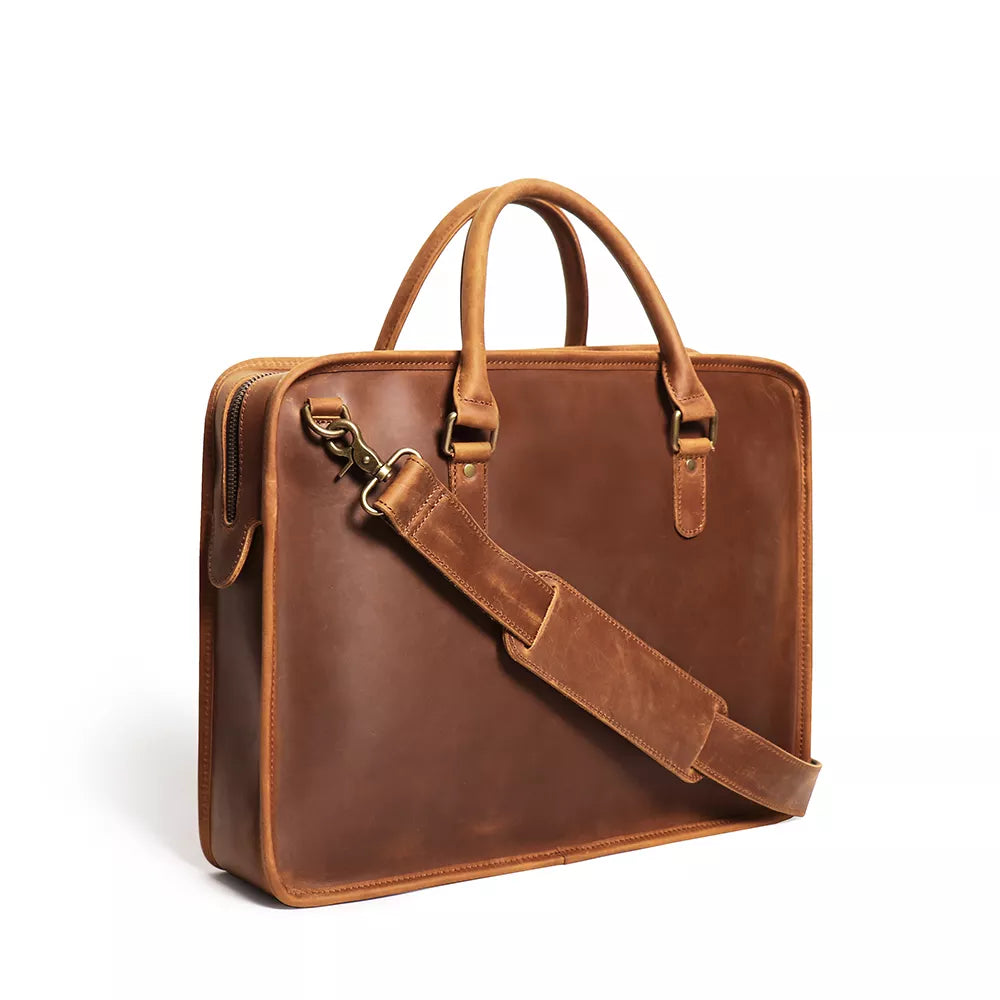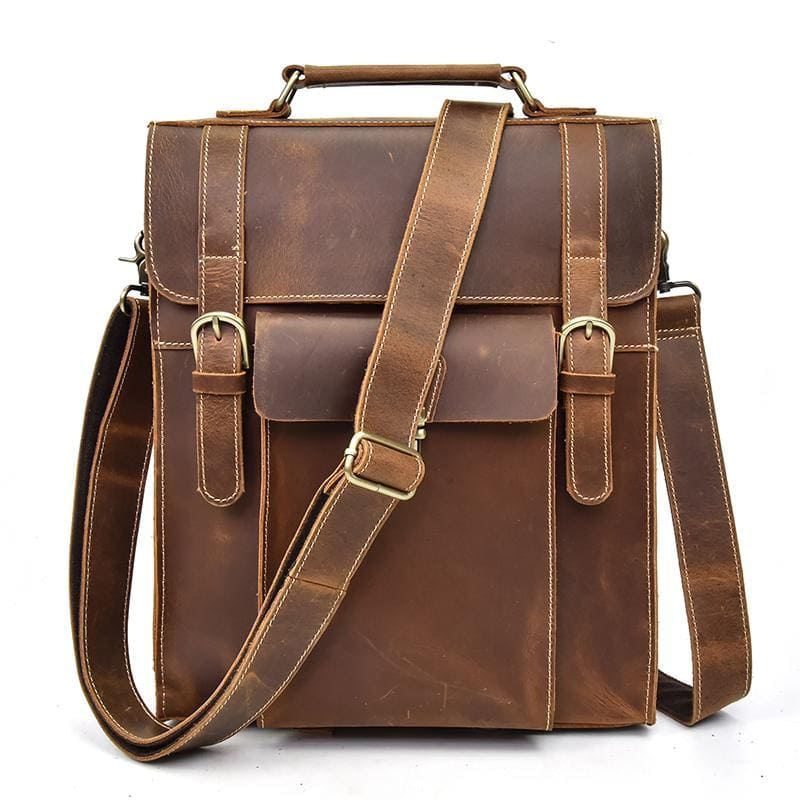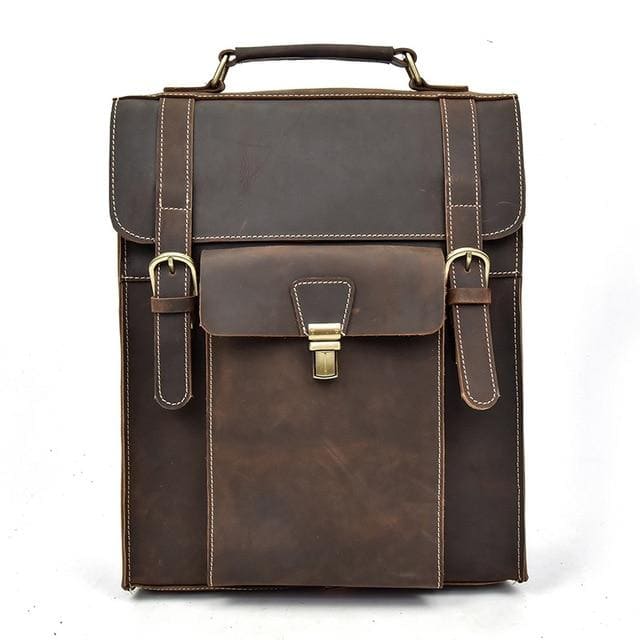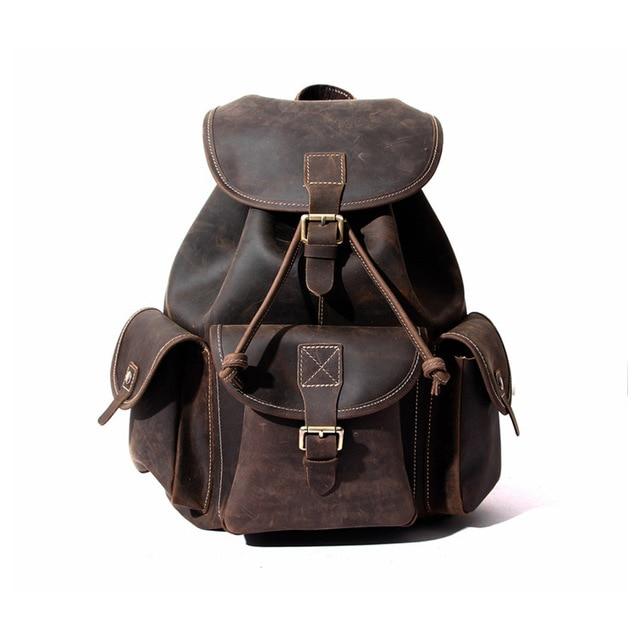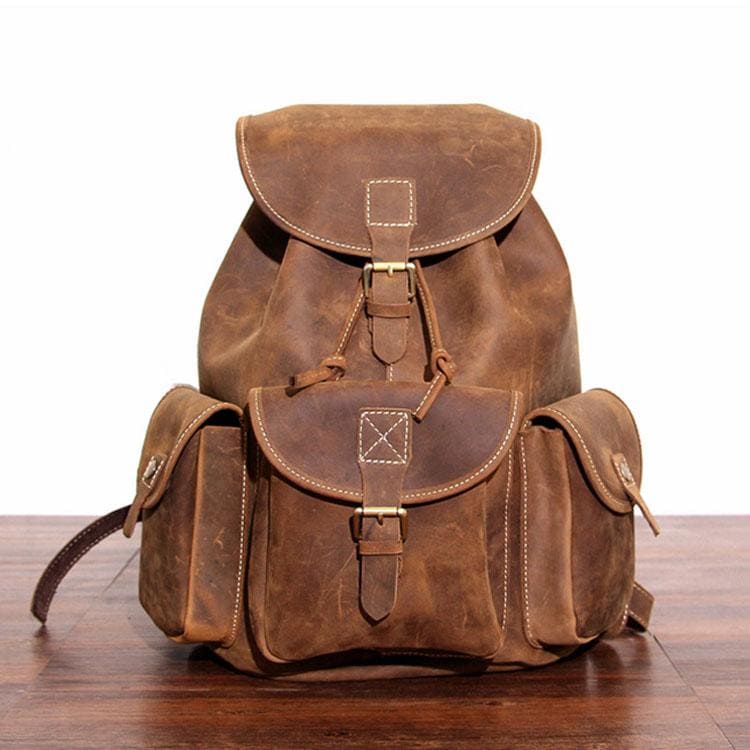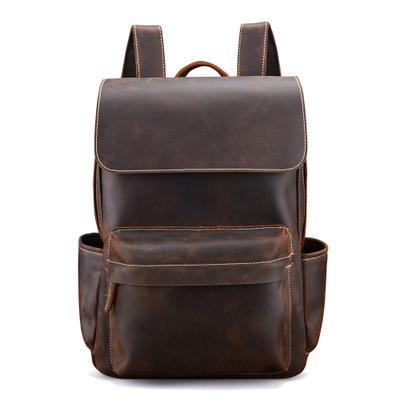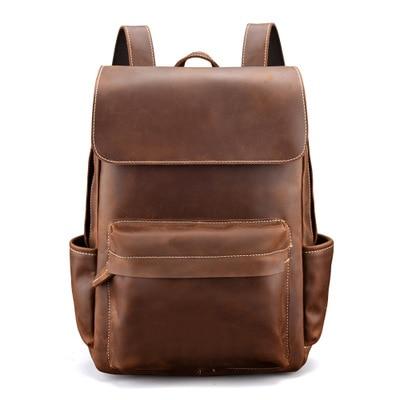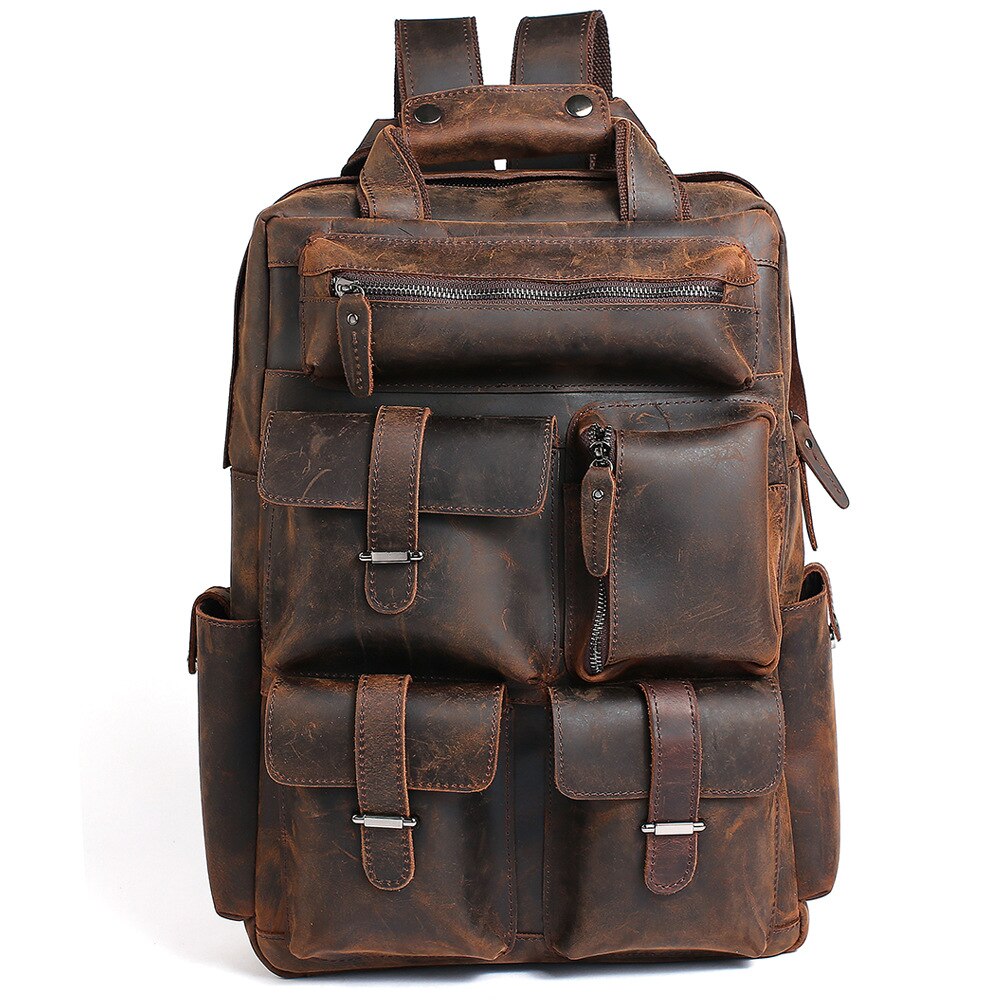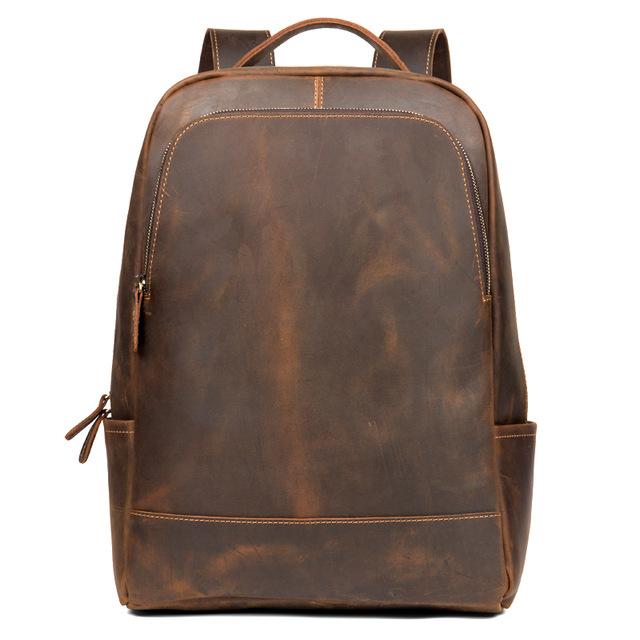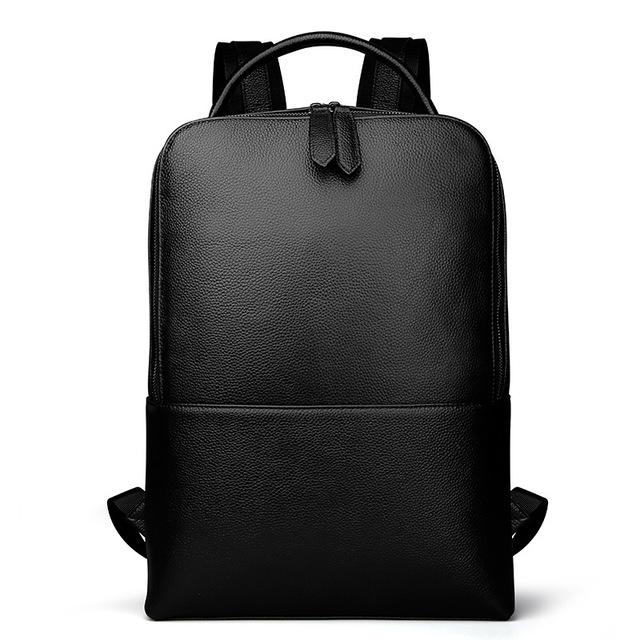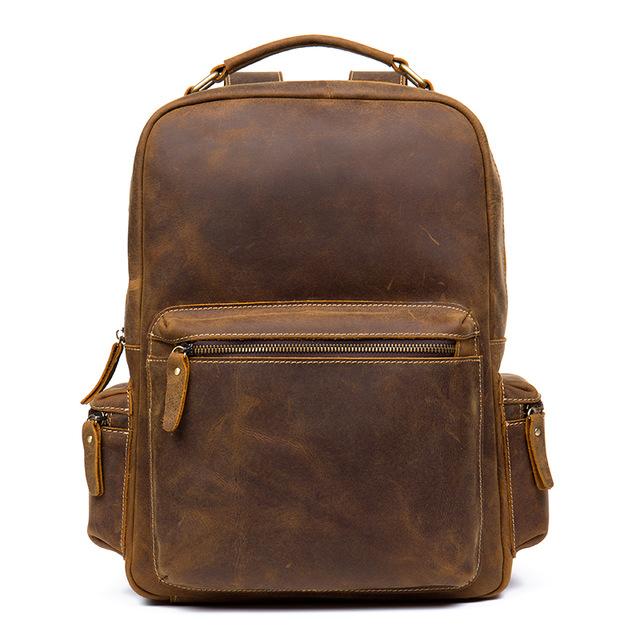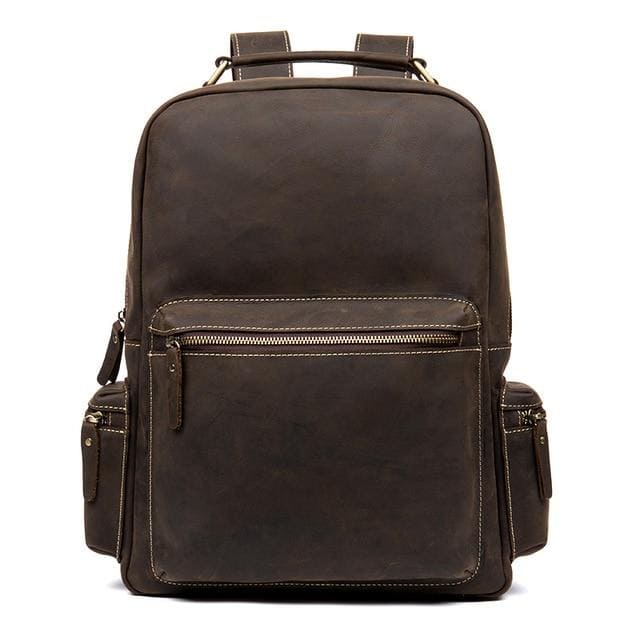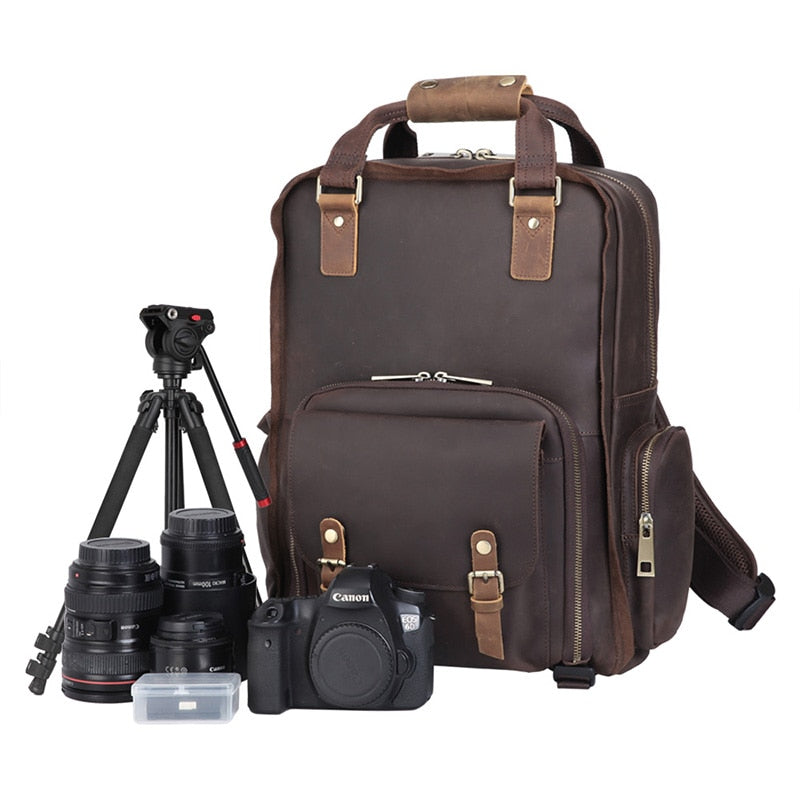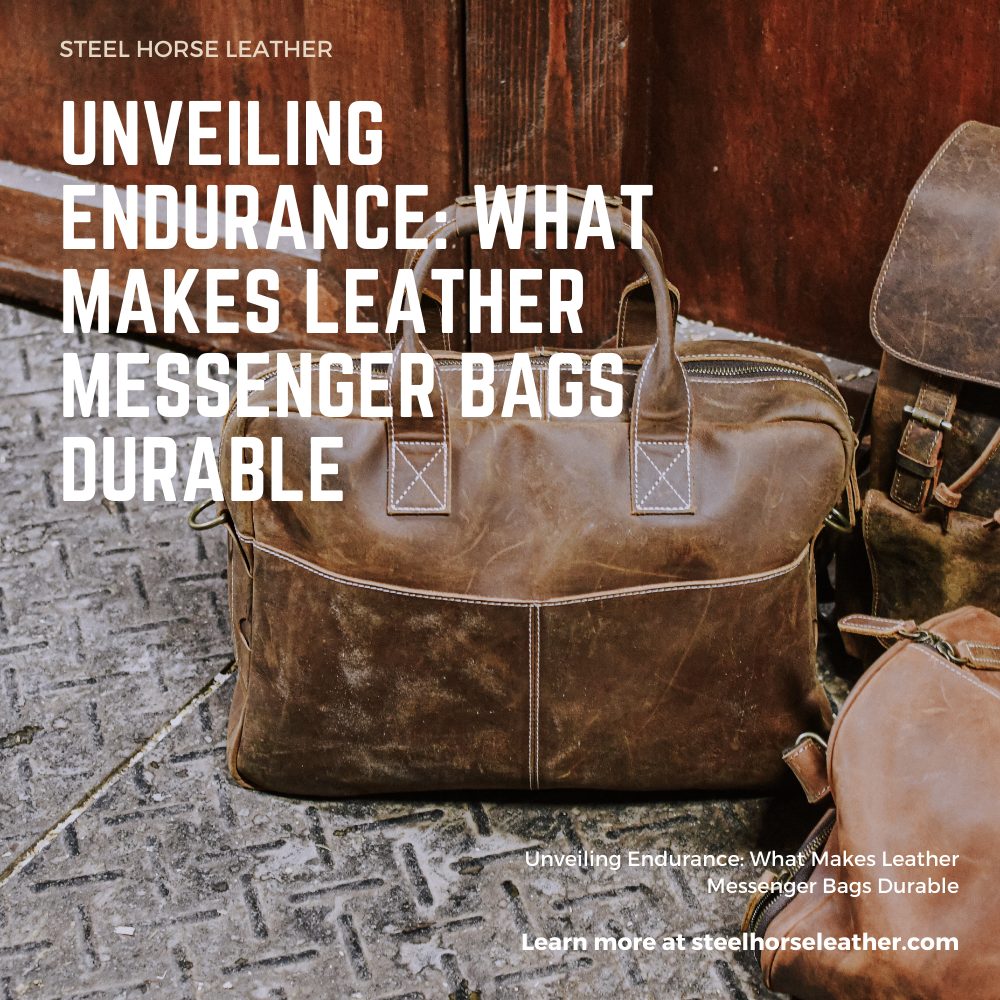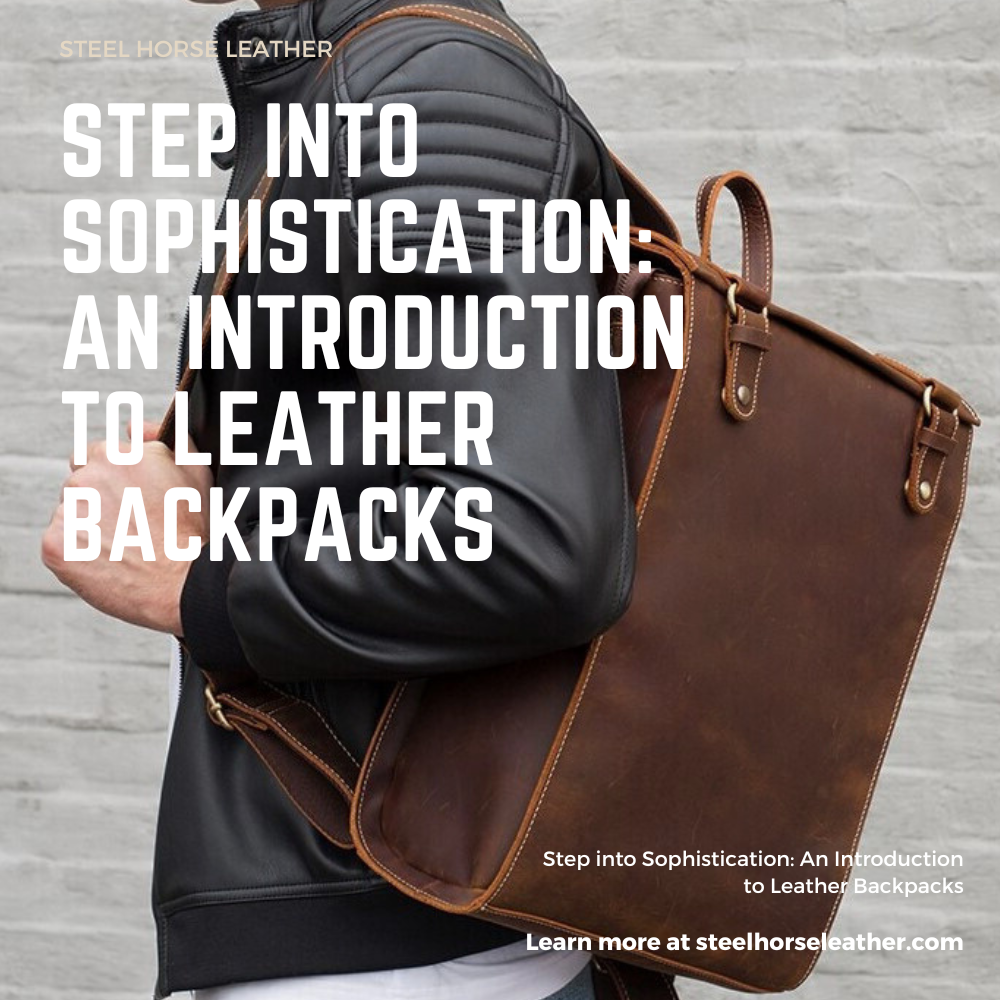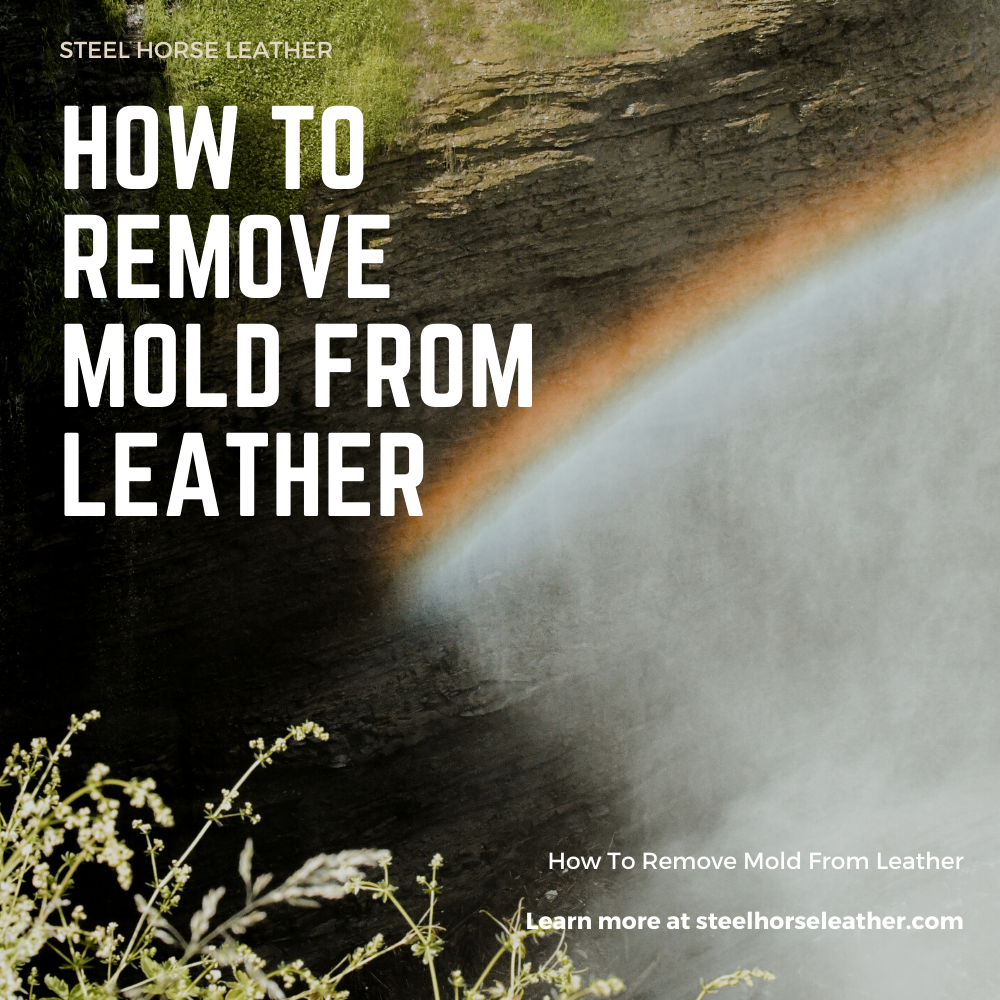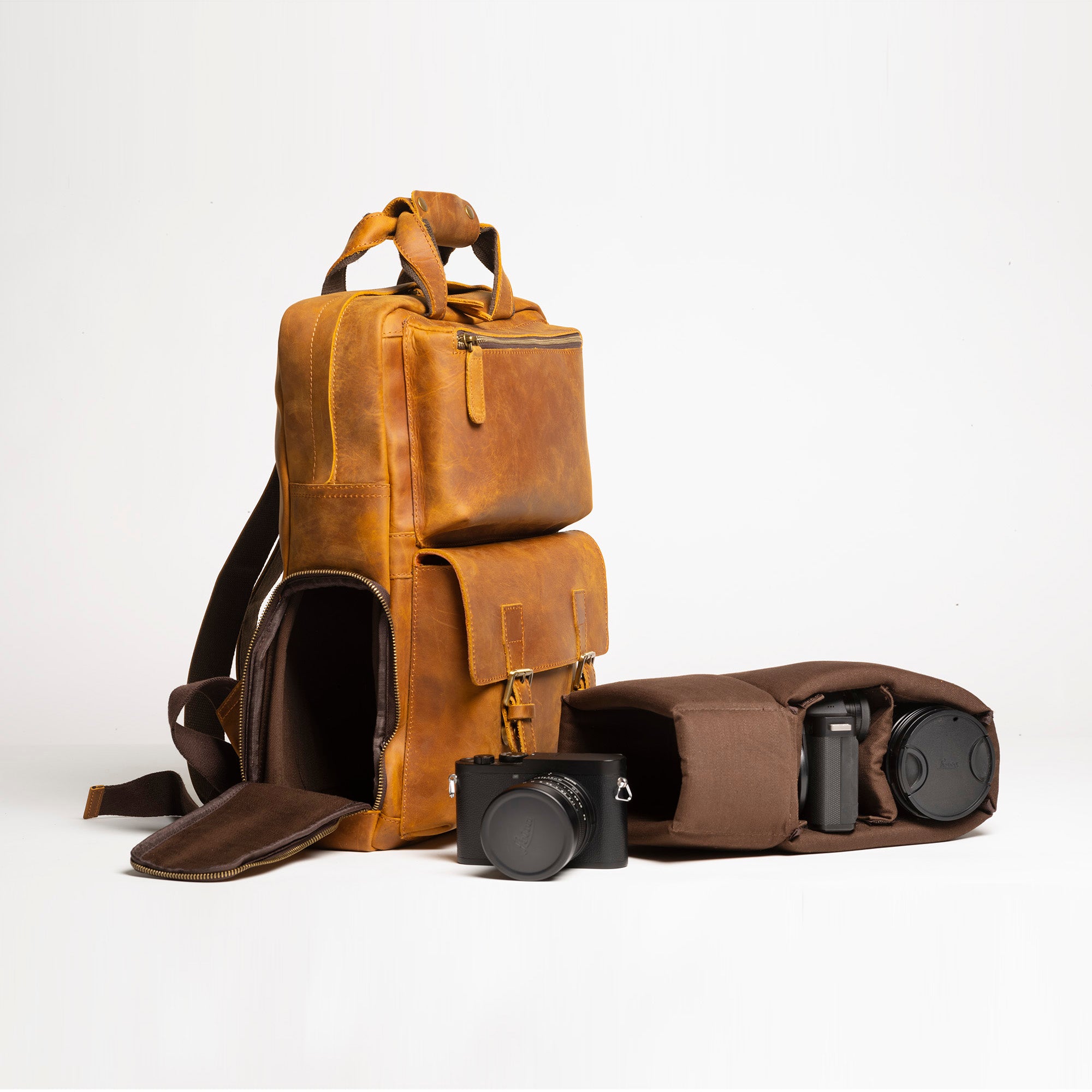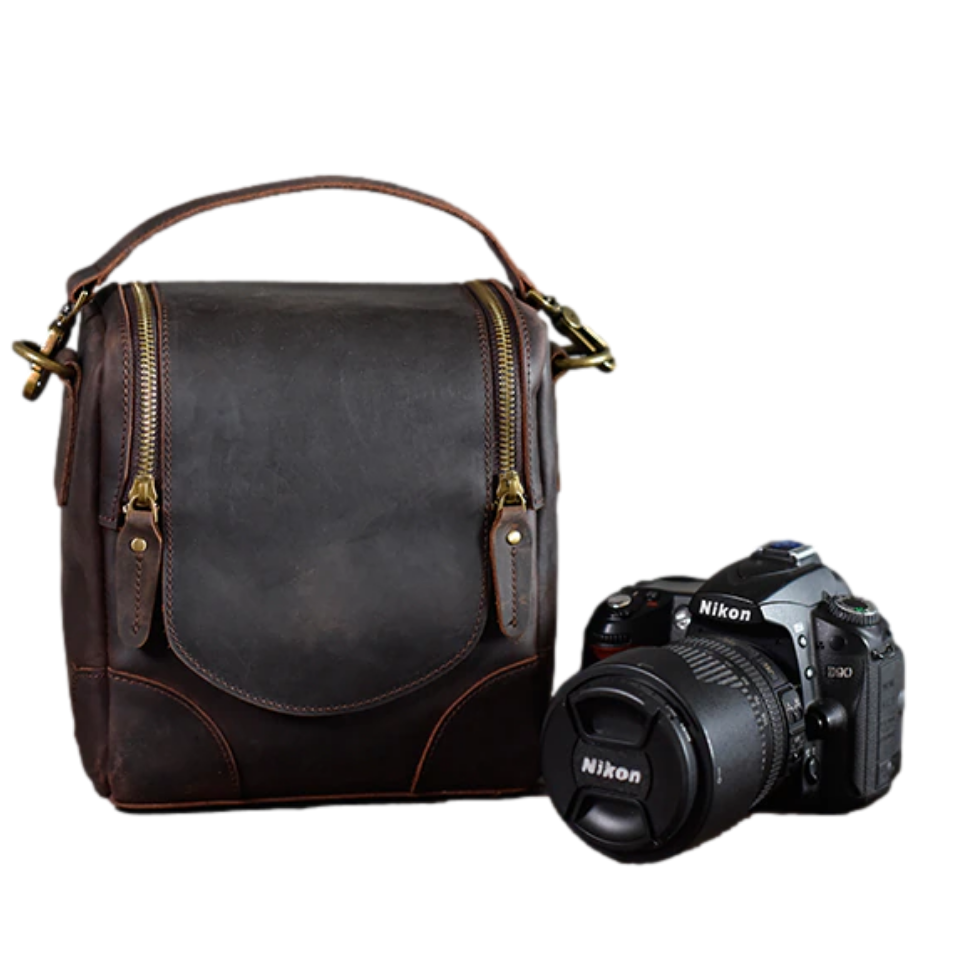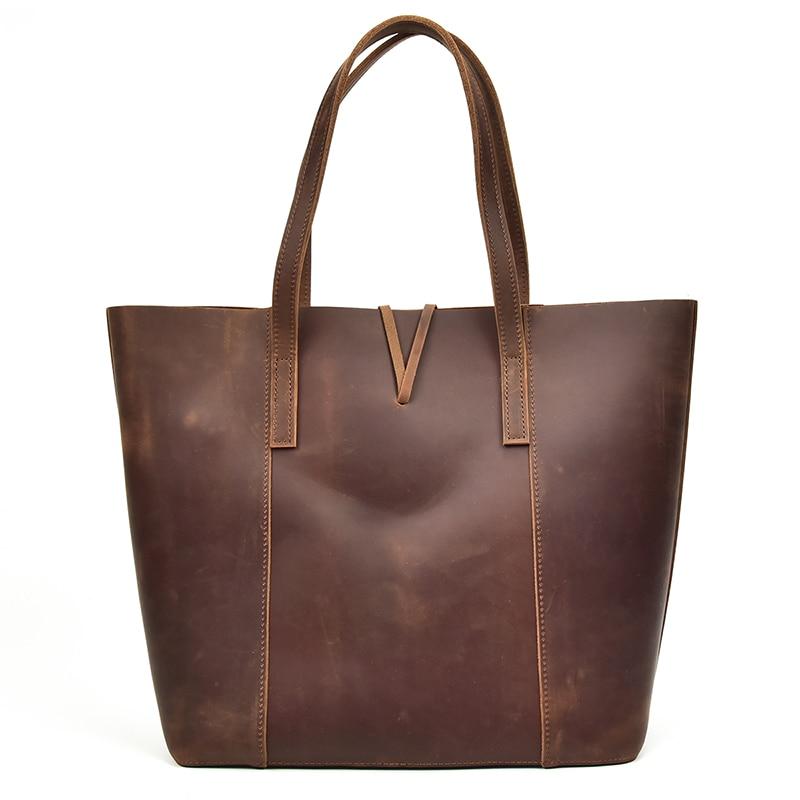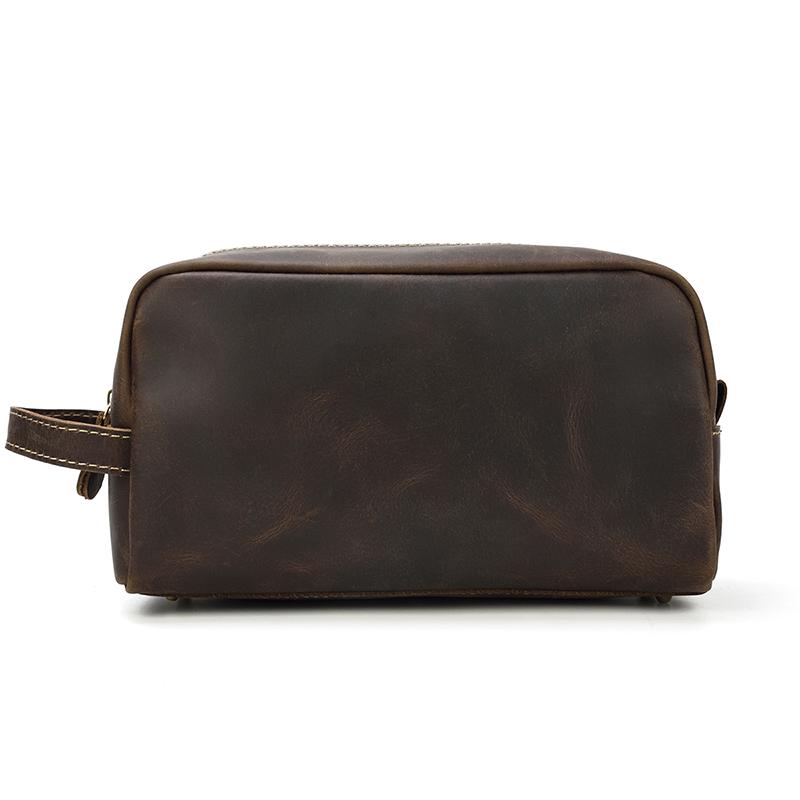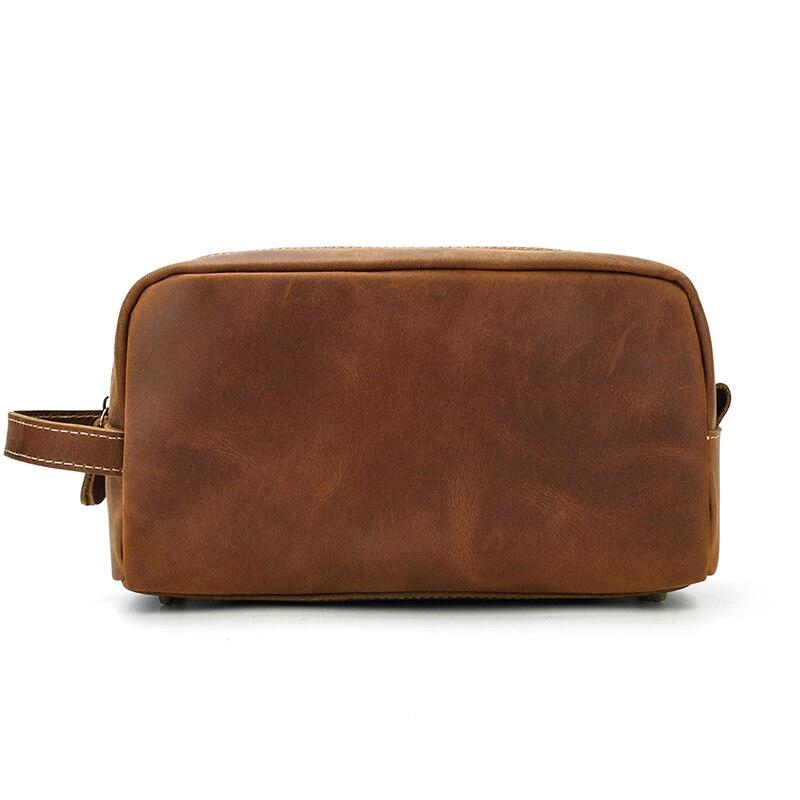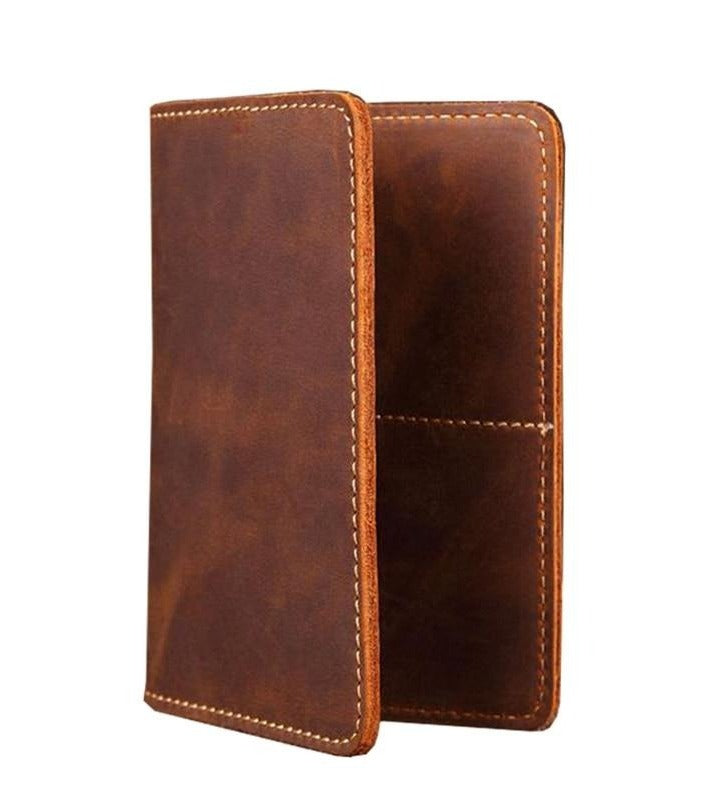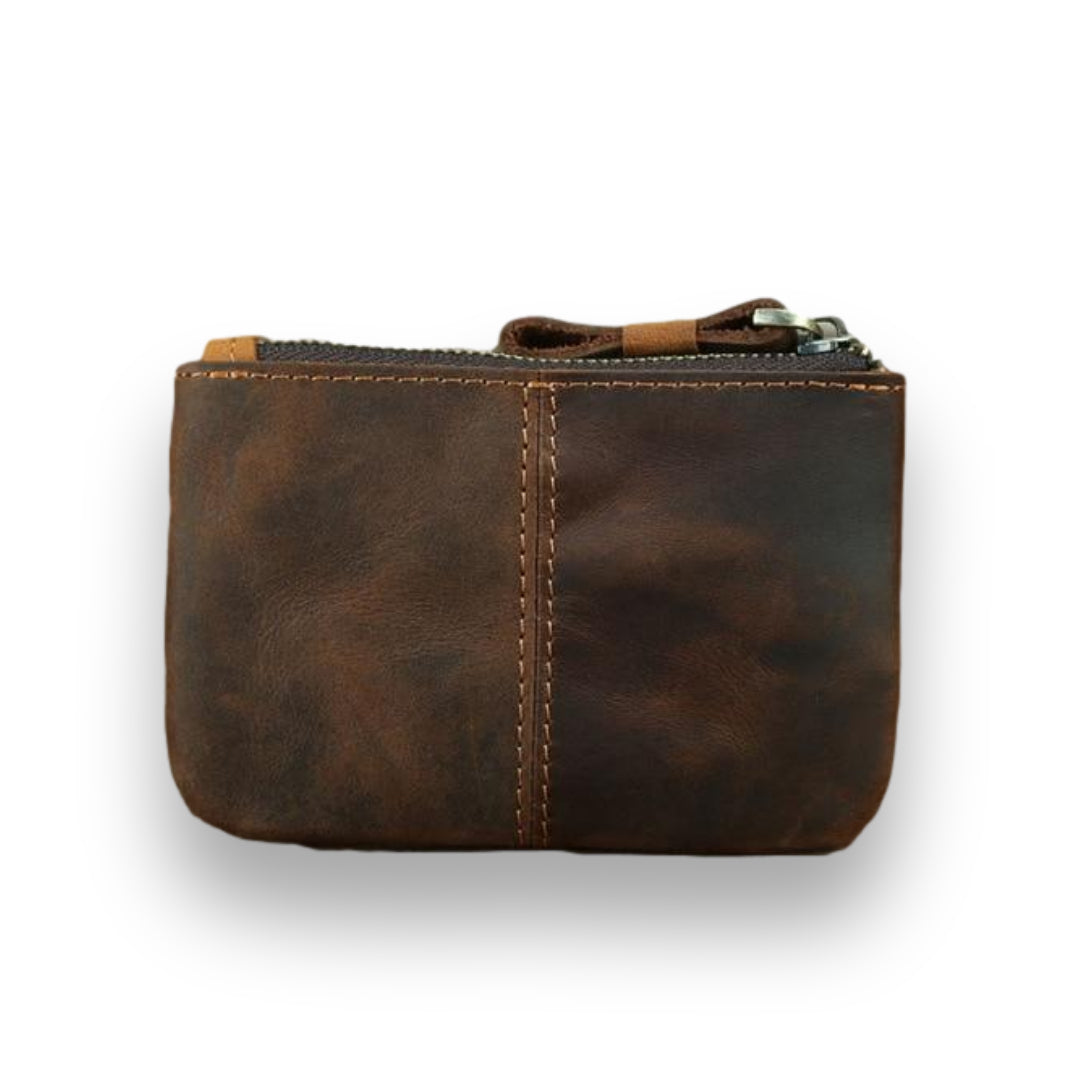Buffalo leather is the tanned hide from one of the 74 species (or subspecies) of domestic buffalo and bovine cattle. The most common types are American buffalo and Texas Longhorn, but there are also a number of other breeds that have been used for this purpose. These include Angus, Hereford, Jersey, Shorthorn, Simmental, and Wagyu.
Key Takeaways
- Buffalo leather is made from the hides of domesticated buffalo, primarily in Asia, where 97% of the global 194 million buffalo population resides. It is produced as a byproduct after the animal's working life or meat production.
- Buffalo leather is thicker, stronger, and more durable than cowhide, with a coarse grain that gives it a striking texture. It develops a rich patina over time and resists tearing and burning.
- Traditional tanning methods are environmentally friendlier but time-consuming, taking up to four weeks. Chrome tanning is faster but uses harmful chemicals. The tanning process involves several steps, including curing, dyeing, and finishing.
- Buffalo leather is more durable and resistant than cowhide, lambskin, or sheep leather, making it ideal for heavy-use items like saddles, luggage, and motorcycle gear. It surpasses "genuine leather" in quality and longevity.
- Proper cleaning and conditioning are essential to maintain buffalo leather’s quality. Use dedicated leather cleaners, avoid excessive moisture, and condition regularly to preserve flexibility and prevent drying out.
Our Mastery in Fine Leather Craftsmanship

At Steel Horse Leather, our expertise in buffalo leather craftsmanship spans generations of dedicated artisans who have perfected their skills through years of hands-on experience. Our master craftsmen have developed an intimate understanding of buffalo leather's unique characteristics, from its distinctive grain patterns to its superior durability, through countless hours of working with this exceptional material. This deep knowledge allows us to select only the finest buffalo hides and transform them into products that exemplify both functionality and elegance.
Our commitment to excellence extends beyond mere craftsmanship. We've established robust relationships with ethical leather suppliers and implemented rigorous quality control processes throughout our production chain. Our team has thoroughly researched and vetted numerous leather providers, giving us comprehensive insight into the nuances of buffalo leather sourcing and processing. This expertise enables us to identify premium-quality hides that meet our exacting standards for durability, texture, and sustainability. What sets us apart is our holistic approach to leather goods manufacturing, combining traditional artisanal techniques with modern quality assurance methods.
Our master artisans don't just create products; they understand the science behind leather tanning, aging, and maintenance. This knowledge has been instrumental in developing our signature products, such as The Colden Duffle Bag and The Viggo Briefcase, which showcase the perfect balance between durability and sophistication. When you choose our buffalo leather products, you're benefiting from our years of specialized experience and unwavering dedication to quality craftsmanship.
The Aging Process of Buffalo Leather and How It Affects Quality

The aging process of buffalo leather is a remarkable journey that enhances its character and quality over time. As the leather matures, it develops a distinctive patina, adding depth and richness that is cherished by leather enthusiasts. This natural transformation is influenced by various factors, including exposure to light, handling, and environmental conditions.
Unlike synthetic materials, buffalo leather breathes due to its porous nature, which allows it to adapt and respond to its surroundings. Over the years, this leather becomes softer, more pliable, and comfortable to wear or use, elevating its aesthetic appeal and durability. Proper care, such as regular conditioning and avoiding excessive moisture, can significantly prolong the life of buffalo leather and enhance its aging process, making it not only a style statement but also a timeless investment.
The Significance of Craftsmanship in Buffalo Leather Products
The significance of craftsmanship in buffalo leather products cannot be overstated. Each piece of buffalo leather is treated with the utmost care and attention, showcasing the artistry of skilled artisans who understand the material's unique properties. The process begins with the selection of high-quality hides, which are renowned for their durability and rich texture.
Craftsmen then employ traditional techniques alongside modern innovations, ensuring that every stitch and cut enhances the final product’s aesthetic appeal and functionality. This dedication to craftsmanship not only elevates the quality of buffalo leather goods but also imbues each item with a story, reflecting the time-honored traditions and skills passed down through generations. Investing in these handcrafted items means appreciating the harmony between artistry and utility, resulting in pieces that are not only beautiful but also possess a lasting value.
Buffalo Leather in Fashion Versus Utility Products

When considering the distinction between buffalo leather in fashion versus utility products, it's essential to recognize the unique attributes each category brings to the table. Buffalo leather, known for its rich texture and durability, often shines in the realm of fashion, where its distinct grain and appearance can make a bold statement. Designers appreciate its ability to withstand wear, making it an ideal choice for high-end handbags, jackets, and shoes that require both style and longevity.
On the other hand, in utility applications such as belts, wallets, and work gear, buffalo leather's resilience is equally valued. Its thick composition offers superior protection against the elements, ensuring that utility products not only serve their purpose effectively but also develop a beautiful patina over time. This duality in usage showcases the versatility of buffalo leather, appealing to a broad audience who appreciate both its aesthetic and functional qualities, bridging the gap between fashion and practicality.
Variety in Buffalo Leather Products
Buffalo leather is celebrated for its remarkable versatility, offering a wide array of products that cater to diverse styles and needs. From robust bags and sturdy wallets to elegant apparel and durable furniture, the options are almost limitless. A prime example is The Colden Duffle Bag, which showcases the premium qualities of crazy horse leather, a specially treated form of buffalo leather known for its durability and distinctive appearance. This bag, measuring 23.6" x 10" x 7", exemplifies how buffalo leather can be transformed into sophisticated travel accessories that combine functionality with timeless elegance.
Each piece showcases the unique characteristics of buffalo leather, including its rich texture and natural variations in appearance. The tanning process enhances its durability while maintaining the leather's breathable qualities, making it an ideal choice for those seeking both functionality and style. In The Colden Duffle Bag's development, our craftsmen particularly noted how the crazy horse leather developed a beautiful patina even during the manufacturing process, promising an even more distinguished appearance over time.
Origin and Production
Cow leather and bison leather/buffalo leather are both made by skilled artisans in the traditions of centuries past. Buffalo was first domesticated in Asia over 6,000 years before they introduced into Europe. There are currently 194 million domesticated buffaloes worldwide, 97 percent of which are raised in Asia. Buffalo are domesticated animals that are used for pulling carts and plows in India, where they produce more milk than cows. At the end of their working life, the hides of buffalo are tanned to produce buffalo leather.
Manufacturing Process
The quickest way to get tanned is by using chrome tanning, which can be done in just a few days. However, research comparing the sustainability of various tanning processes has shown that chrome tanning introduces harmful pollutants into the environment, while traditional vegetable tanning methods, though taking around four weeks to complete, are significantly more environmentally friendly (Dalmases et al., 2020). This scientific evidence underscores the importance of choosing leather products from manufacturers who prioritize sustainable tanning practices.
Tanning Steps
- After a buffalo has been slaughtered for meat, its hide must be removed. The hide is sold for use by a tanner who then takes out any remaining flesh, fat, or muscle from it.
- The next step is to remove all of the moisture, preservatives, and oils from the skin. By now, the material is in its "wet blue" stage because it has a blue color at this point.
- All of the wet blues are tanned in a large drum with added preservatives and dyes as they get tumbled for hours. It takes anywhere from 8 to 12 hours to cure leather.
- Leather is soaked in hot water before it goes into the press. After drying, it's finished by applying various types of finishing agents.
Physical Characteristics

Bovine leather comes in a wide variety of colors and finishes, including rich, dark tones that give them a striking appearance. They can be dyed or stained with natural dyes like indigo, madder, logwood, and walnut shell. Some manufacturers use vegetable tanning agents such as sumac, oak bark, and even coffee beans. Other methods include using mineral salts to create a salt-cured finish.
Buffalo leather's superior performance characteristics are backed by scientific research. According to a study by Khalaf et al. published in 2023, buffalo leather typically ranges in thickness from 1.2 mm to 2.0 mm, making it significantly thicker than cowhide, which contributes to its enhanced durability and smoother texture (Khalaf et al., 2023). This measurable difference in thickness explains why buffalo leather products can withstand heavier use and last considerably longer than their cowhide counterparts.
Aging Properties
With proper leather care, buffalo leather will develop a beautiful patina over time, making it even more attractive. The color will deepen with age as well as become darker and richer. This process takes anywhere between two months and three years depending on how often you clean your saddle. If you want to speed up the aging process, you can rub the saddle with olive oil or linseed oils.
Quality Assessment and Authentication
There are lots of different types of leather available for purchase. Some of them may not be genuine leather at all. To save time and money, tanneries often allow the wet blue to sit for a short time before they soak it up and use the leather.
In our experience developing The Viggo Briefcase, we found that selecting the right quality of leather was crucial for ensuring both durability and aesthetic appeal. The briefcase's construction, weighing 3.7 lbs, demonstrates how quality leather can be both substantial and practical, with features like a wear-proof grab handle and ergonomically designed straps that distribute weight evenly.
Price Indicators
Quality leather products cannot be inexpensive. If you want high quality, you will need to pay for it and when people claim that their low-priced products are genuine, it may be possible that they are lying to you.
Authenticity Verification
Apart from recognizing low-quality leather, you also need to know how to identify fake leather because there is so much of it. Leather firstly has a strong smell and secondarily low quality leathers have it too. If there is no strong and pungent smell, then there is a high probability that it is fake. Furthermore, if it feels like cheap plastic, then it might be fake or of poor quality. Avoid leather products that are made by bonding leather together or leather that has many imperfections.
Strength and Durability
Buffalo leather has an extra thick skin layer that makes it stronger and more durable than cowhide. Buffalo hide leathers are not stretched during the tannage process, unlike cowhide leathers, and therefore they are thick and more resistant to tearing than cowhide leathers. Full grain buffalo leather has one of the strongest leathers that you can get. Also, because buffalo leather is thicker, it's easier to repair if something does happen to it.
Comparative Analysis
| Comparison | Buffalo Leather 🐃 | Other Leather |
|---|---|---|
| vs. Genuine Leather 📜 | Scars and imperfections give an interesting look 🌟 Color varies by breed and tanning 🎨 Superior to genuine leather in beauty and durability 💪 |
Genuine leather is the lowest quality 📉 Weak, no durability, lacks natural beauty 😞 |
| vs. Sheep Leather 🐑 | Thick and supple ✅ Ideal for weight-bearing items like shoes and bags 👜👞 |
Too thin and weak ⚠️ Used for lightweight items: gloves, book covers, clothing 🧤📖 |
| vs. Calf Leather 🐄 | Much thicker with coarse grain 🔨 Harder and far more durable 🛡️ Best for saddlebags, motorcycles, luggage 🏍️🧳 |
Prized for softness and fine grain 🌸 Durable but less tough than buffalo ⚖️ |
| vs. Cowhide 🐮 | Usually cheaper 💰 Strong and durable, similar uses to cowhide 🔄 |
Used for floors, walls, furniture, bags, shoes 🛋️👡 Available in many colors and patterns 🎨 |
| vs. Cow Leather 🐄 | Hide is twice as thick 📏 More pronounced grain, stronger, lasts longer ⏳ |
Largest leather type globally 🌍 Makes up ~2/3 of leather products From ~1.5 billion cows 🐮 |
| vs. Lambskin Leather 🐑 | Thicker, coarser grain 🪨 Much harder, stain-resistant 🧼 Best for durable items ✅ |
Fine-grained, soft, buttery feel 🧈 Ideal for high-end small items like handbags 👜 Thin and delicate, prone to staining 🚫 |
Buffalo vs. Genuine Leather
Scars and imperfections to the skin of buffalo give the leather an interesting look. The color of buffalo leather varies depending on the breed of buffalo and the tanning process. Genuine leather refers to the lowest quality leather you could possibly buy. Compared with full grain leather and top grain buffalo leather, "genuine leather" is an inferior product, it is weak, has no durability, and doesn't have the natural beauty of genuine buffalo leather.
Buffalo vs. Sheep Leather
Sheep leather is too thin and weak for its intended purpose. Thin materials are used for items where their lightness is a virtue, like book covers, gloves, or lightweight clothing. Buffalo leather is thick and supple, making it ideal for use in weight-bearing products such as shoes and bags.
Buffalo vs. Calf Leather
Calf leather is prized for its leather softness, fine grain, and durability. Buffalo leather is a much thicker type of leather with a coarse grain, it is much harder and much more durable than calf leather. As a result, buffalo leather is best used for items that need to be durable, such as saddlebags, motorcycles, and luggage.
Buffalo vs. Cowhide
Cowhide is the skin of a dead animal whose fur has been removed. Cowhides come in various colors and designs. They can also be dyed and decorated with different patterns. Cowhide is used to cover up floors and walls. It's often used to decorate furniture, bags, and even shoes. Cow leather is often used for similar purposes to buffalo leather because it is strong and durable, but buffalo leather is usually cheaper than cowhide leather.
Buffalo vs. Cow Leather
Cow leather is the largest type of leather produced worldwide and makes up nearly two-thirds of all leather products. About one-and-a-half billion cows produce enough milk for us and use their animal hides to create leather products. Buffalo populations worldwide number just under 200 million, 97 percent of which were raised in Asia. The buffalo hide is twice as thick as cowhide and has a more pronounced grain, so buffalo leather is stronger and lasts longer than cow leather.
Buffalo vs. Lambskin Leather
Lambskin leather is a fine-grained leather with a soft, buttery feel, which makes it ideal for making high-end small leather items like handbags. It is a thin, delicate leather and not very resistant to staining, unlike buffalo leather, whose grain is thicker, coarser, and much harder than lambskin leather. If the item in question has to be durable, then buffalo leather is obviously the best option.
Water Buffalo Leather Specifics

Water buffalo leather has a natural grain and soft feel. Its textured surface and impressive strength have made it a favorite among horse riders, who call it "Memel" leather. Dressage riders benefit greatly from the comfort and grip offered by water buffalo leather saddles or knee blocks. Water buffalo leather has traditionally been used for high-quality leather products, including wallets, leather backpacks, leather duffle bags, and leather boots.
Water Buffalo vs. African Cape Buffalo
Buffalo are large members of the Bovidae family of mammals. There are two kinds of buffalo: the African cape buffalo and the Asian water buffaloes. They are large, aggressive, and usually brownish-black animals that look a lot like cows.
Characteristics for Leather Products
If a product needs to be more durable, then we use buffalo leather. Buffalo leather has different characteristics than cowhide. The texture of buffalo leather is especially striking because of its broader, thicker fibers. This means that buffalo leather will have a stronger, denser look and feel than cowhide.
Flexibility Properties
It is made from 100% natural ingredients, so it breathes similar to human skin because it has the ability to both release and retains moisture. It has these characteristics, so it can be worn in any season, even during the coldest months. Buffalo leather products will maintain their shape and won't stretch out even if they're subjected to high amounts of pressure.
Durability Features
Additional information buffalo leather is known for its resilience and flexibility as well as its resistance to pressure and burns. It is not easily torn or burned, which makes it an extremely durable material. Most common related products for this real leather are leather wallets, handbags, briefcases, luggage, and shoes.
Quality Aspects
This is one of the best qualities of buffalo leather. It's very hardy and long-lasting. It doesn't crack or peel off as fabric does. It's also easy to clean and maintain. Leather is a popular choice for making bags because it's versatile and durable.
Maintenance and Care
Common Cleaning Myths
Facts and myths are revealed by those who know them best. Leather cleaning doesn't have to be difficult or time-consuming, but if you want professional results, then you'll need to hire a professional cleaner.
Baby Wipes
Wipes don't really clean your leather. They're just as good as damp cloths at cleaning the surface of the leather. Wipes will simply slide across the top surface of the leather without picking up any dirt.
Furniture Polish
Some furniture polish can cause damage to your leather upholstery. Silicone can interfere with the way your leather repairs penetrate into the fibers of your leather.
Cheap Leather Cleaners
The cheaper the leather cleaner, the less effective it is at cleaning your leather products. A leather cleaner begins its life as an extremely powerful cleaning solution.
Proper Cleaning Methods
You can clean buffalo leather by rubbing a moist, clean cloth over its surface. It's a tricky balancing act between making sure the fabric is not too wet and ruining the leather.
Cleaning Steps
- Use microfiber towels
- Apply dedicated leather cleaner if needed
- Use gentle circular motions
- Avoid excessive moisture
Conditioning Process
Buffalo tanning leaves the leather fibers exposed so they dry out faster than when they're covered by another type of finish. It's therefore important to condition your vegetable-tanned leather more often.
Conditioning Steps
- Apply conditioner in small circular motions
- Allow it to soak for several minutes
- Wipe away excess with lint-free cloth
- Consider applying protective coating
Special Considerations
Buffalo Leather Absorption
Buffalo leather is very absorbent. It also works well for absorbing dirt, liquids, and stains. Don't use power tools or brushes when cleaning leather furniture. It's best not to use harsh cleaners on buffalo leather because they could permanently stain it.
Light-Colored Leather Care
Customers often ask how they can deep clean their light-colored leather. This tends to show dirt more clearly than darker-colored leather. We recommend buying a leather cleaning product specifically designed for light-colored leather.
Types of Buffalo Leather Products
Environmental and Ethical Footprint of Buffalo Leather
Buffalo leather, renowned for its durability and unique texture, also raises important considerations regarding its environmental and ethical footprint. Sourced from the free-range farming of water buffalo, this leather is often seen as a more sustainable alternative to traditional cattle leather. The extensive grazing practices employed in buffalo farming can promote biodiversity and improve soil health, provided that they are managed responsibly. Moreover, many buffalo farms prioritize animal welfare, ensuring that the animals are raised in humane conditions, which aligns with ethical consumerism trends.
However, it's crucial to remain vigilant about the supply chain and sourcing practices, as the benefits can vary significantly based on region and farming methods. By choosing buffalo leather products that emphasize sustainable practices and ethical treatment of animals, consumers can make informed decisions that contribute to a healthier planet and promote responsible fashion.
Frequently Asked Questions
What Is Top-Grain Buffalo Leather?
Top-grain buffalo leather also has natural cowhide characteristics, giving it a unique appearance, thickness, and good durability.
What is Full Grain Buffalo Leather?
Domestic American buffalo hide. The top layer typically carries all the best and most natural characteristics of the buffalo hides.
What Is Genuine Leather?
The name "genuine leather" aims at making this type of leather sound high-quality.
What Is the Difference Between Buffalo Leather and Cowhide?
Buffalo leather has a relatively distinctive grain compared to cowhide leather grain, making it a popular choice for consumers and seasoned leatherworkers.
Conclusion
The main difference between buffalo leather and other types of leather is that buffalo leather is thicker and tougher than most other kinds of leather. Buffalo leather is suitable for many uses, including shoe uppers, belts, and luggage.
Buffalo leather is a great material to work with because it is naturally durable and easy to care for. However, it does require some extra attention to keep it looking good. This article provides details about buffalo leather and tips on how to clean and maintain buffalo leather bags. Hope this information will help you choose the right bags for yourself!
Ethical Considerations
All of the cow and buffalo hides are supplied from the meat business, meaning, we don't harm any animals in order to produce our products. This ensures sustainable and ethical sourcing of leather materials.
References
Dalmases, A., Combalía, F., Font, J., & Baquero, G. (2020). Comparison of the sustainability of the vegetable, wet-white and chromium tanning processes through the life cycle analysis. Journal of the American Leather Chemists Association, 115(03), 105-111. https://doi.org/10.34314/jalca.v115i03.1628
Khalaf, T., Muthuramalingam, T., & Moiduddin, K. (2023). Performance evaluation and moora based optimization of pulse width control on leather specimens in diode laser beam cutting process. Processes, 11(10), 2901. https://doi.org/10.3390/pr11102901
























